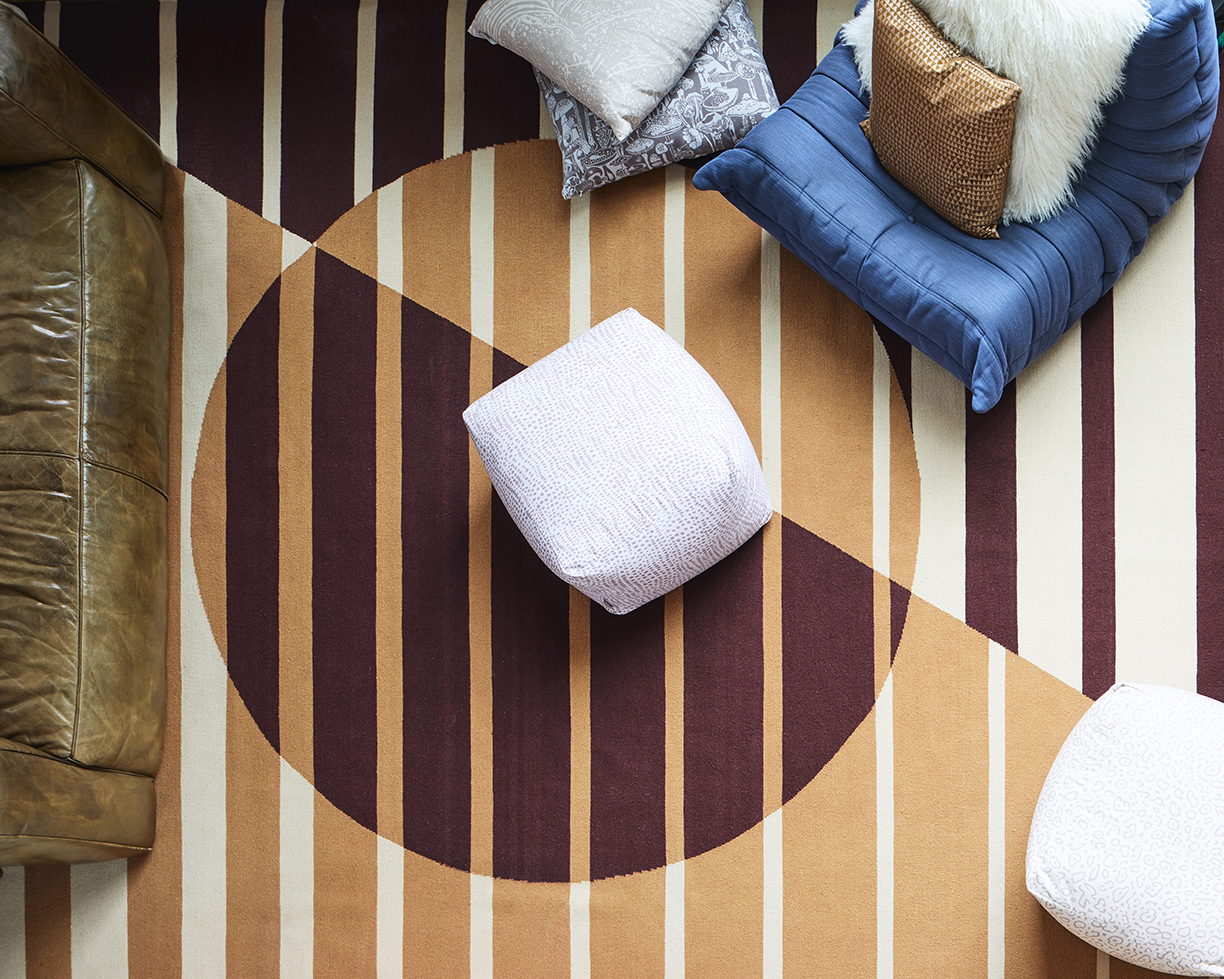With the push for wellness-oriented spaces around the globe, interior designers are looking for different ways to incorporate this rapidly-growing industry to their styles. While including more plants and flowers into the home is known to brighten up the atmosphere, some designers are taking this theme to the next level. Here’s how:
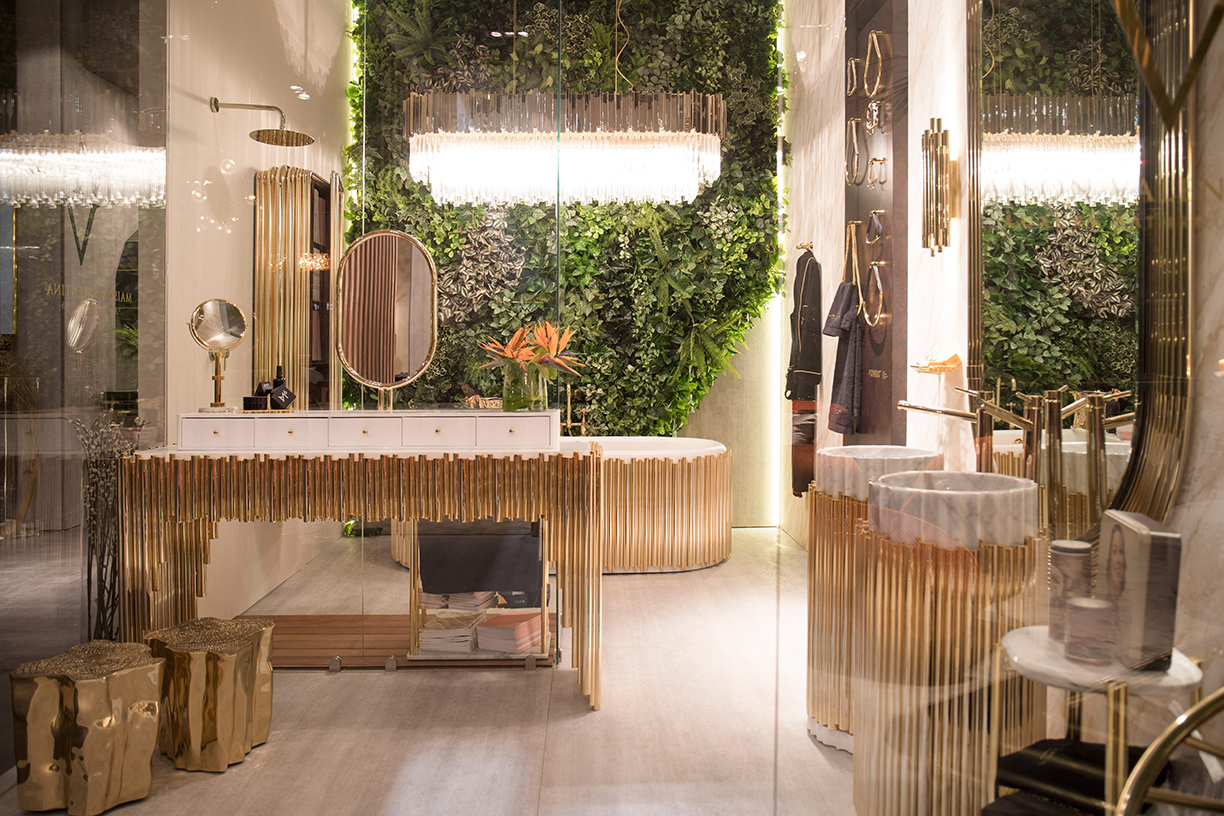
Photo courtesy of Maison Valentina

Photo courtesy of VG New Trend
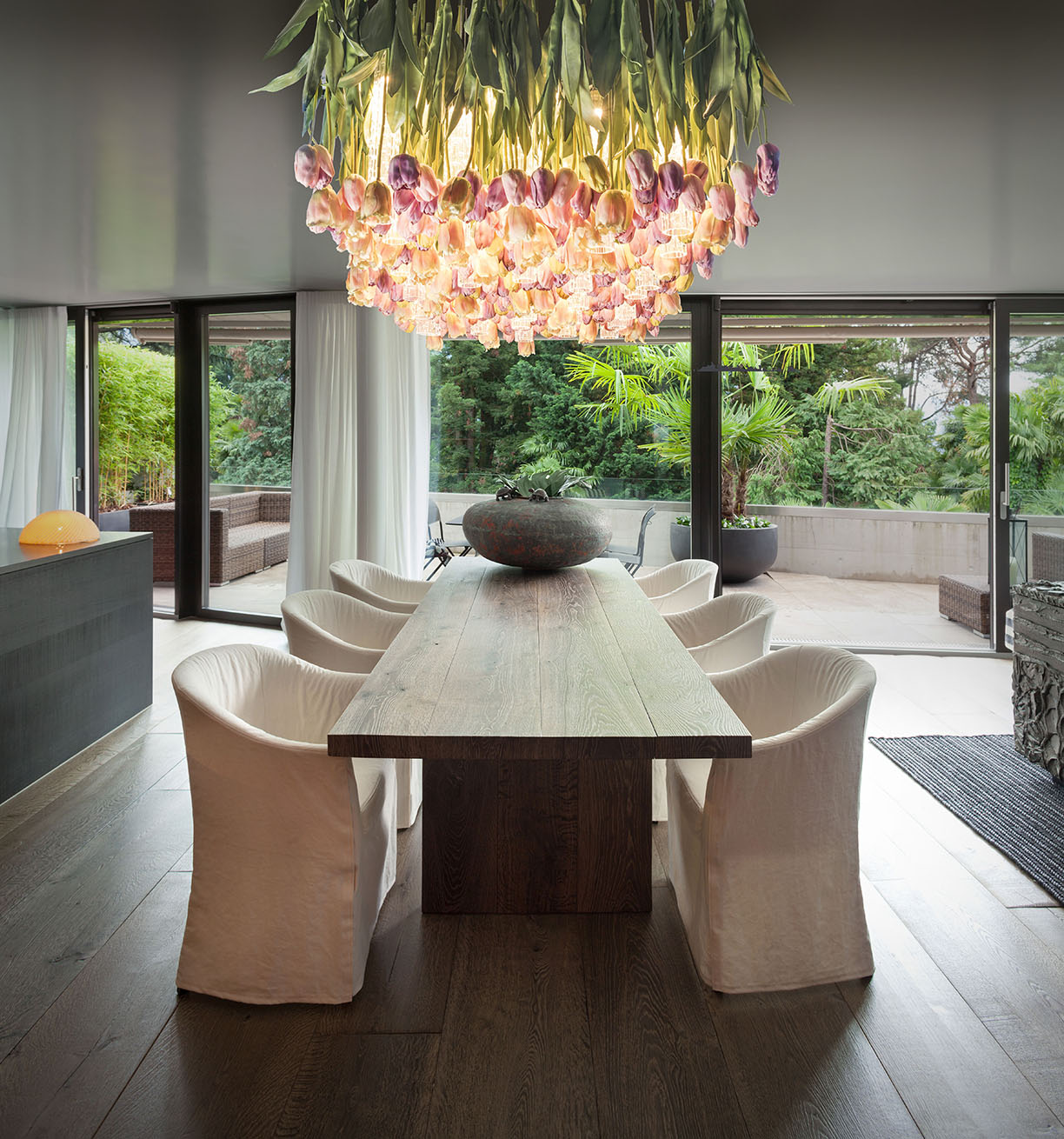
Photo courtesy of VG New Trend
When it comes to lighting, many chandeliers are starting to incorporate elements of nature to bring a more natural, elegant look. Both of these chandeliers are surrounded by vines and flowers, allowing the natural elements to be woven into the design. While critics may argue that the “unrefined” elements of nature decrease the elegance of the chandelier, these rooms prove them wrong. While remaining luxurious, the chandeliers’ design provide a warmer and more relaxed atmosphere.
Natural elements can also be incorporated into the wallpaper of a room, adding a bold yet comfortable piece to the space. Regardless of the individual’s style, nature-oriented wallpaper can be incorporated.
For a more feminine look, a bold, floral wallpaper does just the trick. The bright colors add a fun and relaxed style, while the natural elements of the flowers freshen up the atmosphere of the room.
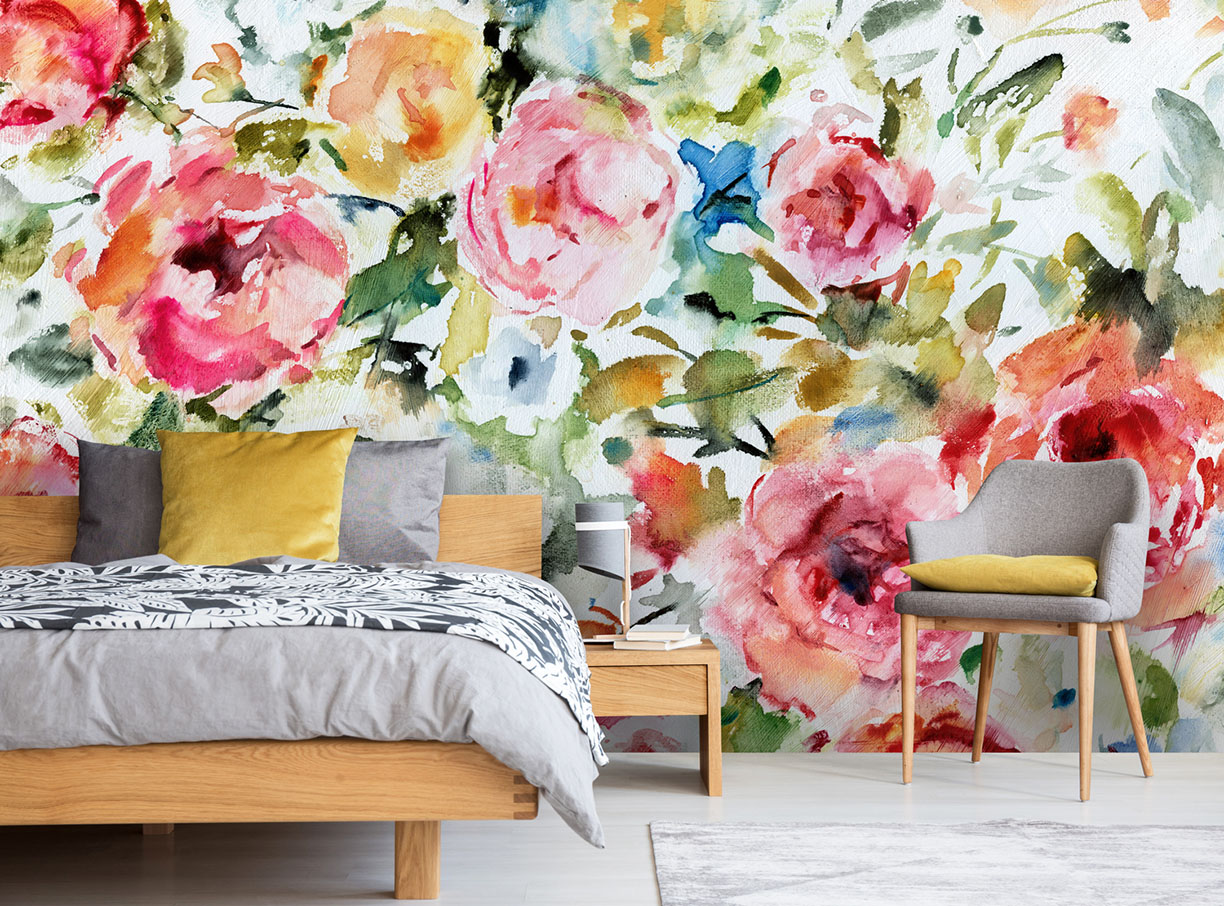
Photo courtesy of Wallsauce
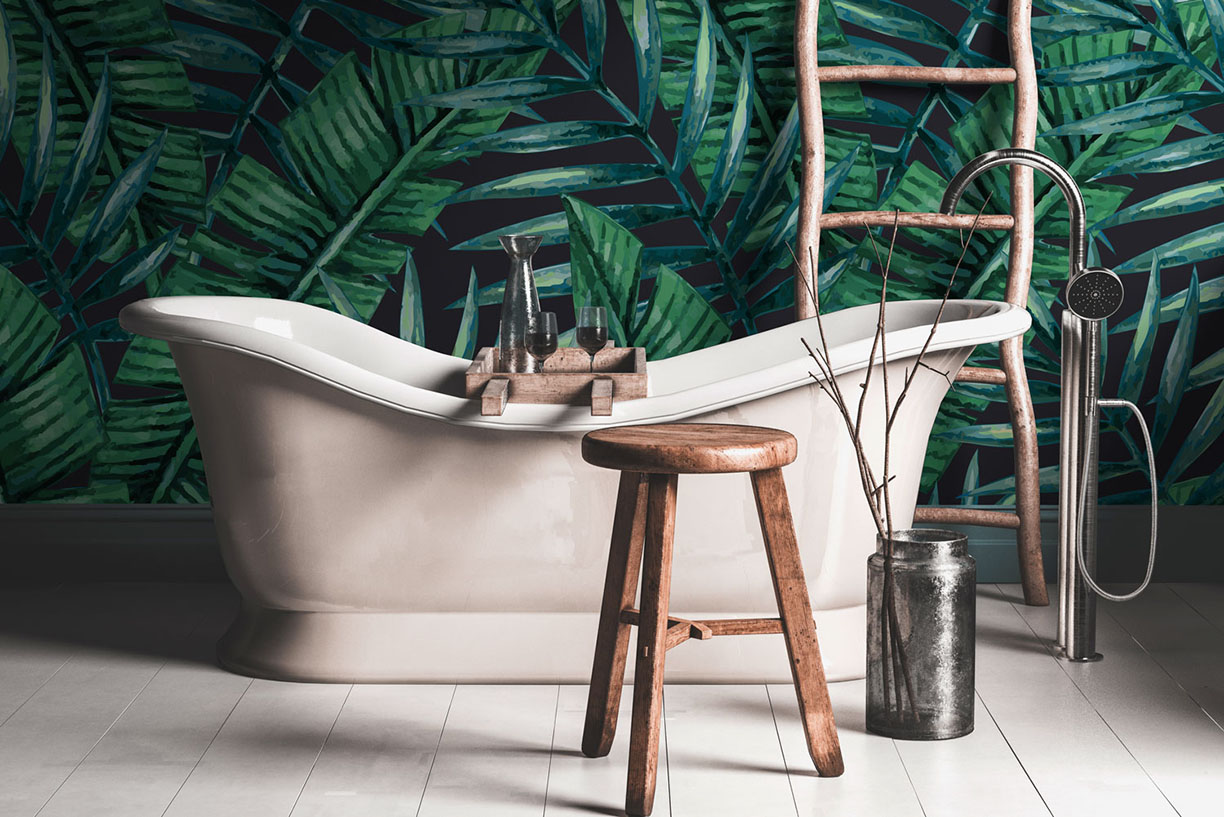
Photo courtesy of Wallsauce
If you’re looking for a less feminine wallpaper, however, incorporating nature to the room is certainly still possible. The darker wallpaper in this bathroom, although much less feminine than a floral backdrop, still adds natural elements to give the room a fresh look.
An often underrated way to style a room with is the flooring, which often ends up as a simple hardwood or tile design. While adding neutral tones to floors can allow other statement pieces in a room to pop, sometimes a bold flooring can be just what the space needs.
With that, here are some tips and tricks to designing a room around a bold floor or rug:
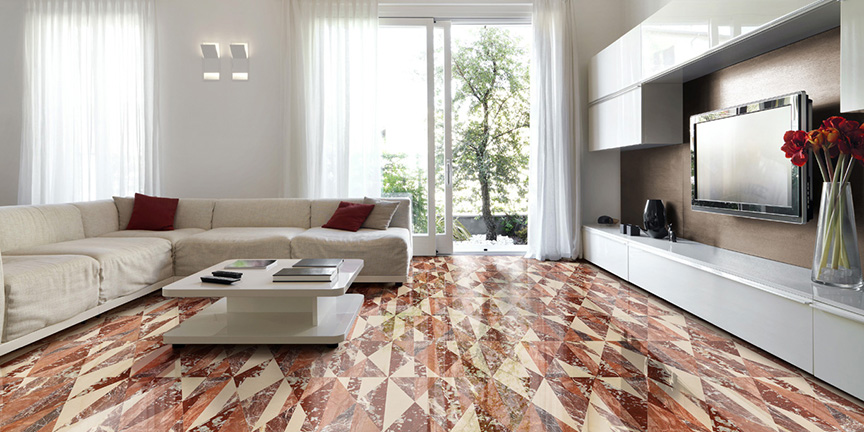
Photo courtesy of Lithos Design

Photo courtesy of Chaplins Furniture
1. Matching Colors
When wanting to design a room with a statement piece, it’s always important to choose the piece that will pop before designing anything else. This way, you’ll know the colors and fabrics involved with the statement piece, and can design around that. In terms of flooring, a bold rug can make or break a room. Choosing the bold rug before anything else can ensure whatever you choose for the rest of the room will complement it.
With this space, the bold rug has two main colors, with gold being its secondary color. Instead of choosing another blue for the chairs, the designer chose to use the rug’s secondary color. This way, the blue rug still adds a pop, rather than being one of pieces with a similar color in the room. By using one of the more minor colors on the floor, there is still a wide variety of hues to have a creative and comfortable style.
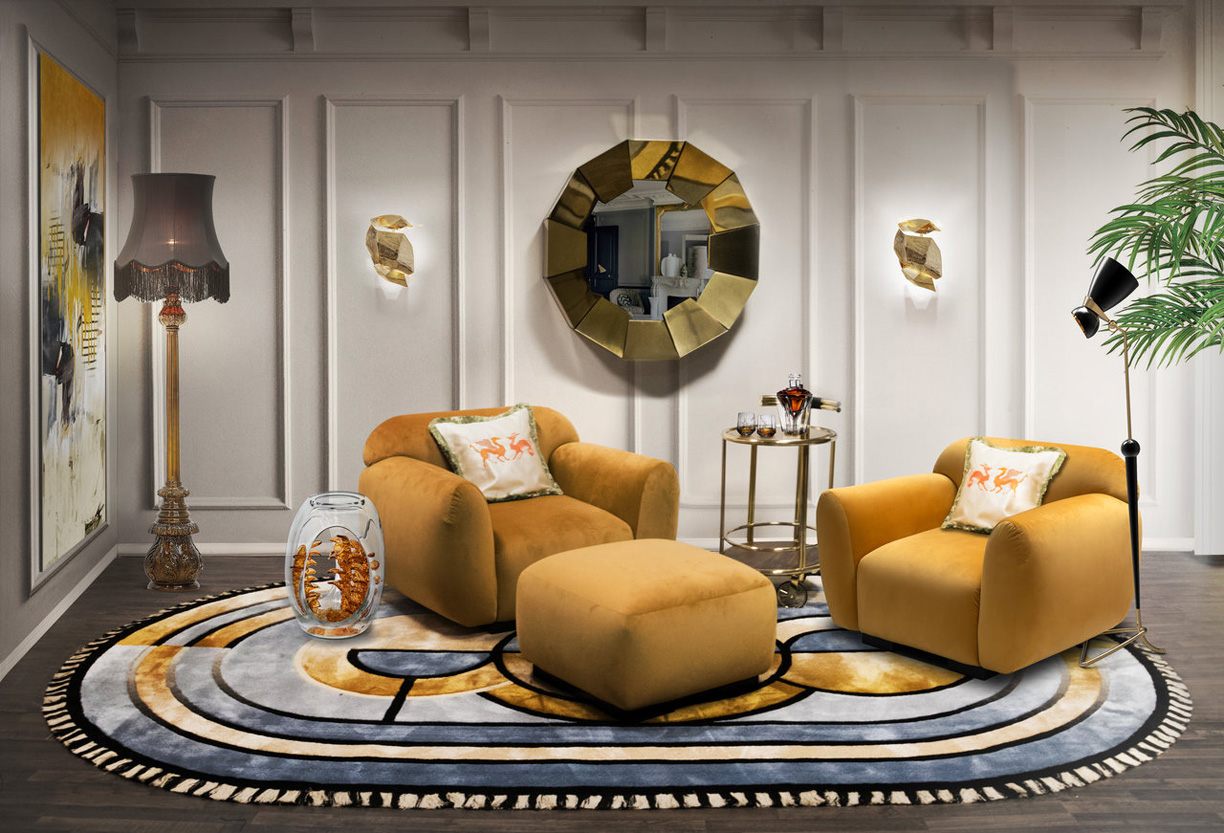
Photo courtesy of RugSociety
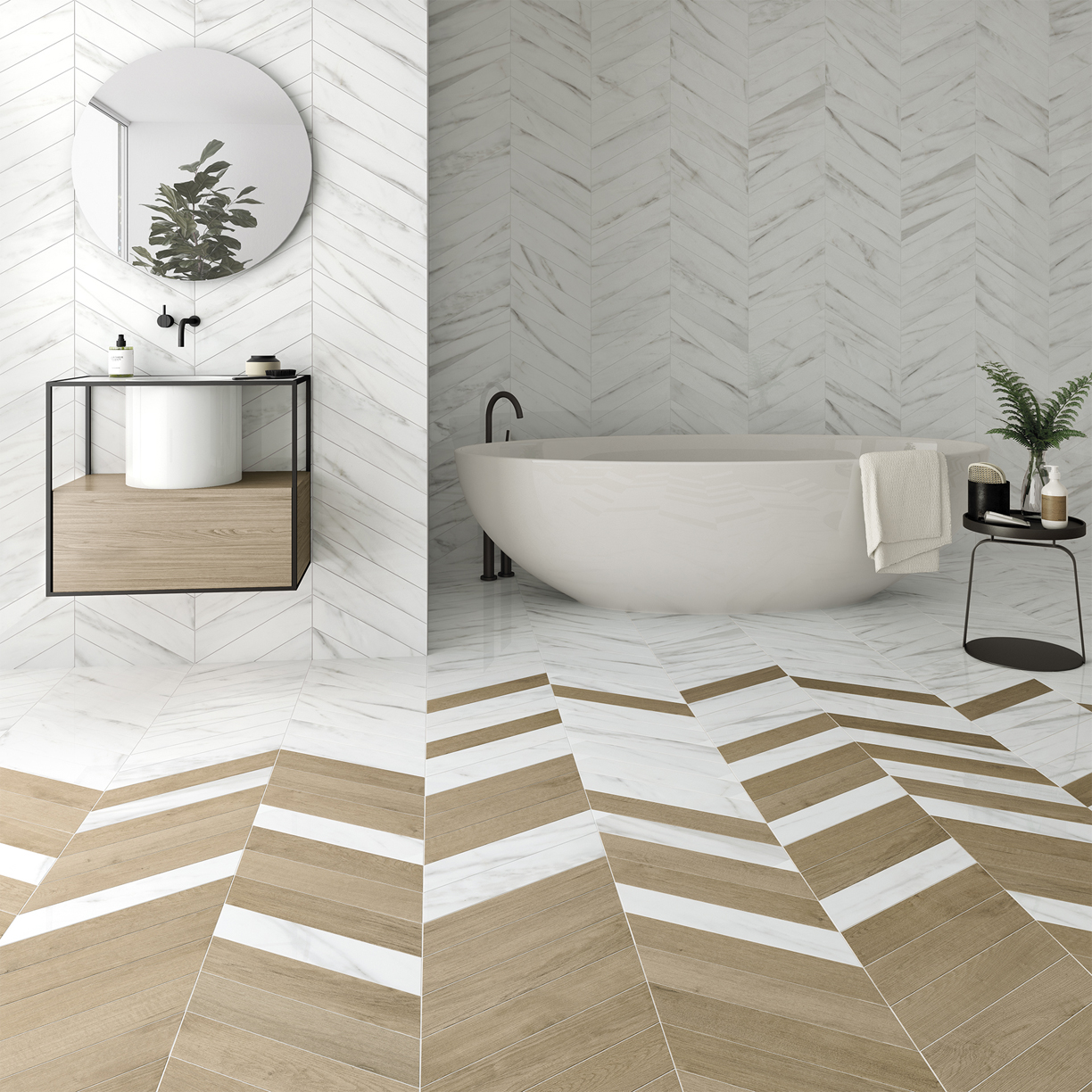
Photo courtesy of WOW Design
2. Sleek and Airy
By allowing the bold floor pattern to be the centerpiece of the room, the designer creates a light and airy atmosphere. Instead of cluttering the room with more designs and colors, the simple designs allow for the bold floor to stand out. The minimalist look along with various plants adds a sleek and refined style to the room while also adding just enough color to keep it vibrant.
The chevron floor interlocking tile and hardwood floors adds a one-of-a-kind design for the individual to enjoy. With the only other colors in the room being a hint of black and green, the minimalist design keeps the style interesting while also comforting in its simplicity. Keep this design in mind if you’re looking for a minimalist style with an added statement piece.
3. Eclectic Style
Don’t be afraid of flooring that gets colorful and different. When styled correctly, this can be the selling-point of the home. Its uniqueness never fails to impress those who are looking for something different yet clean and airy.
While this tile may look busy and complicated close up, take a step back and see the beauty it adds to the home. The mid-century modern design adds a flair unlike any other, while also staying sleek and refined.
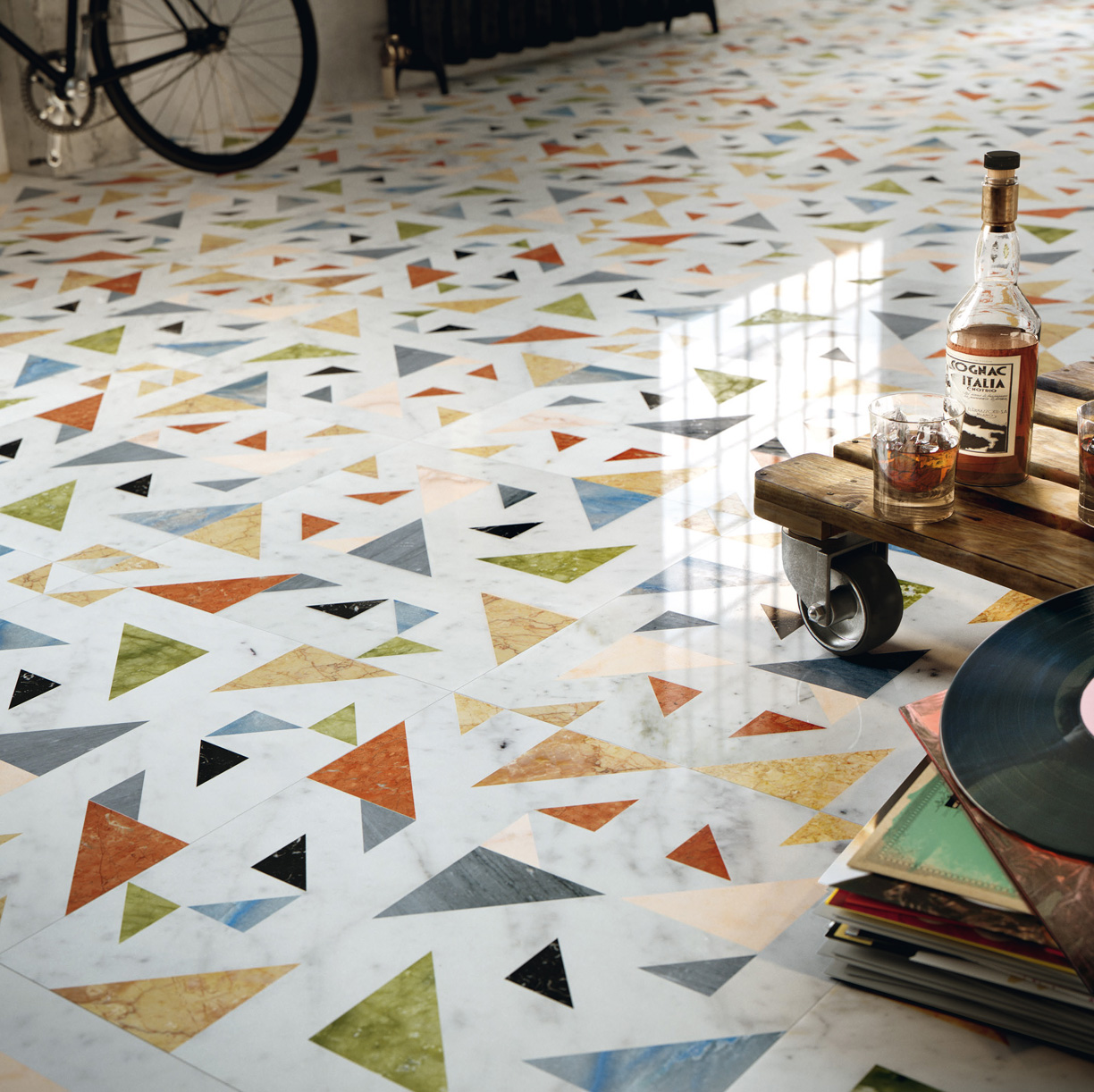
Photo courtesy of Lithos Design
By creating a warm and inviting atmosphere, the fireplace can always become the centerpiece of the home. With so many different styles, however, it is becoming increasingly difficult to make decisions based on the look of the room. Here are different styles that can be used to complement your own personality and the atmosphere of the overall home.
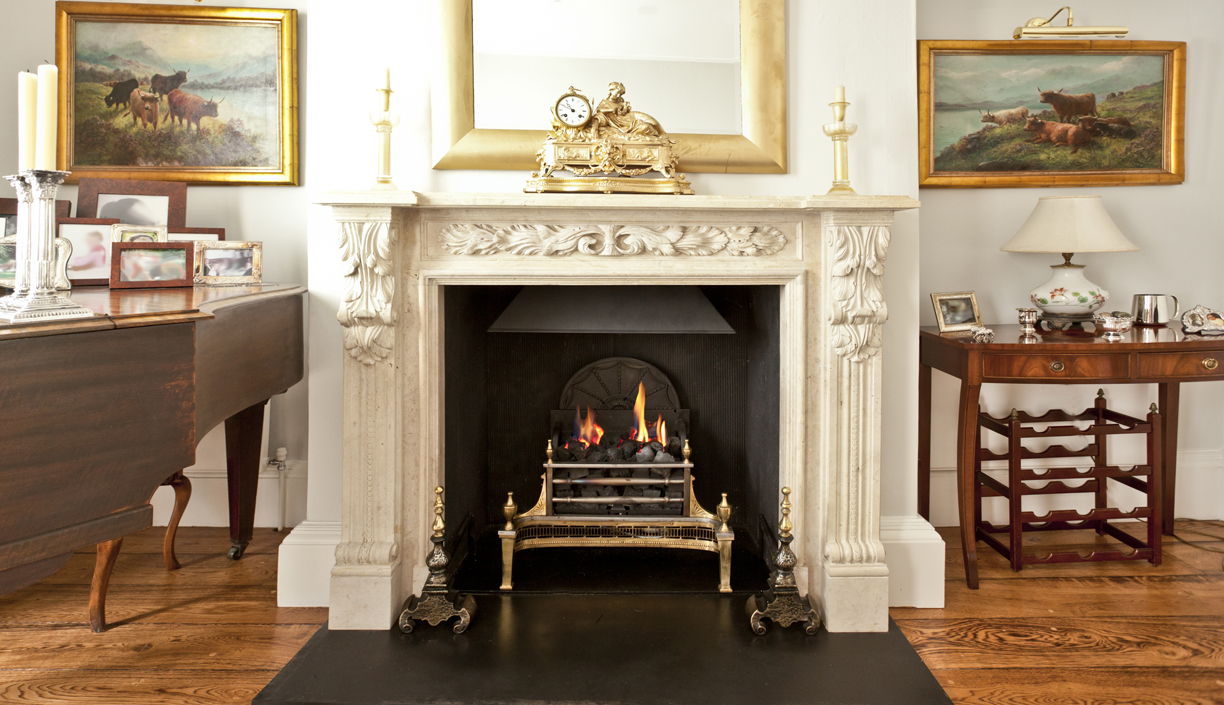
Photo courtesy of THE OLD CINEMA

Photo courtesy of DelightFULL
1. The Classic Grand Fireplace
For a more refined look, the grand fireplace will do just the trick. The gray and white colors in this living room add to the polished atmosphere, bringing luxury to the forefront of the space.
If the style of the home is more traditional and elegant, this is the perfect fireplace for any room. Although it will blend in with the character of the rest of the home, it can still be grand enough to catch your eye. With its intricate detail and sheer size, it is certain to be the masterpiece of any home.
2. The Simple and Sophisticated Fireplace
If you’re looking for a fireplace that warms the atmosphere without taking away from other statement pieces in the room, head in the direction of a simpler, sleek fireplace for your home.
For a more sophisticated style that blends into the background, look toward matching the color of the fireplace with the dominant colors of the room. Tans and light greens dominate the following space, with the chandelier in the center being the main statement piece of the room. To avoid taking your attention off of the chandelier, allow the fireplace to blend seamlessly into the rest of the room.
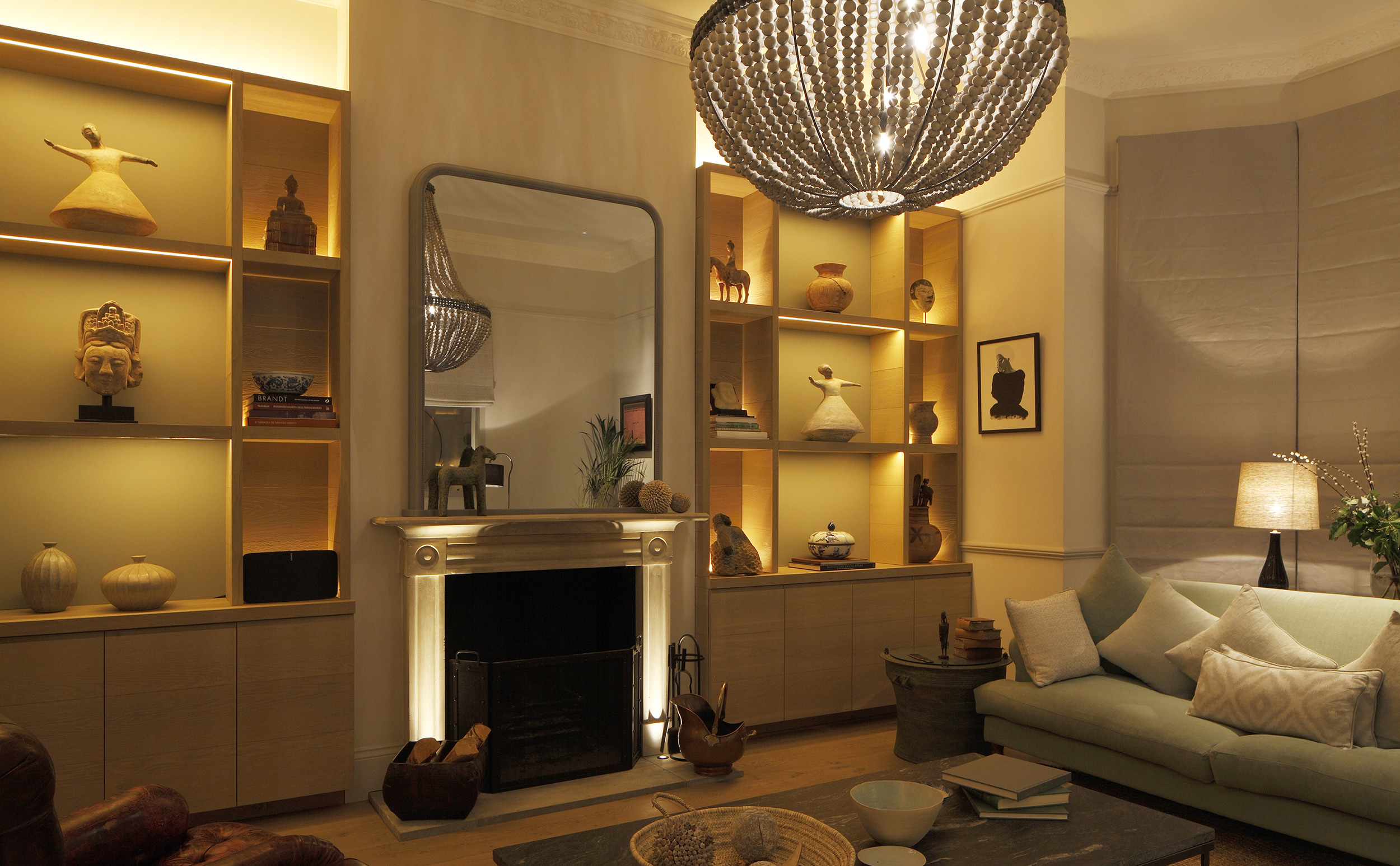
Photo courtesy of John Cullen Lighting
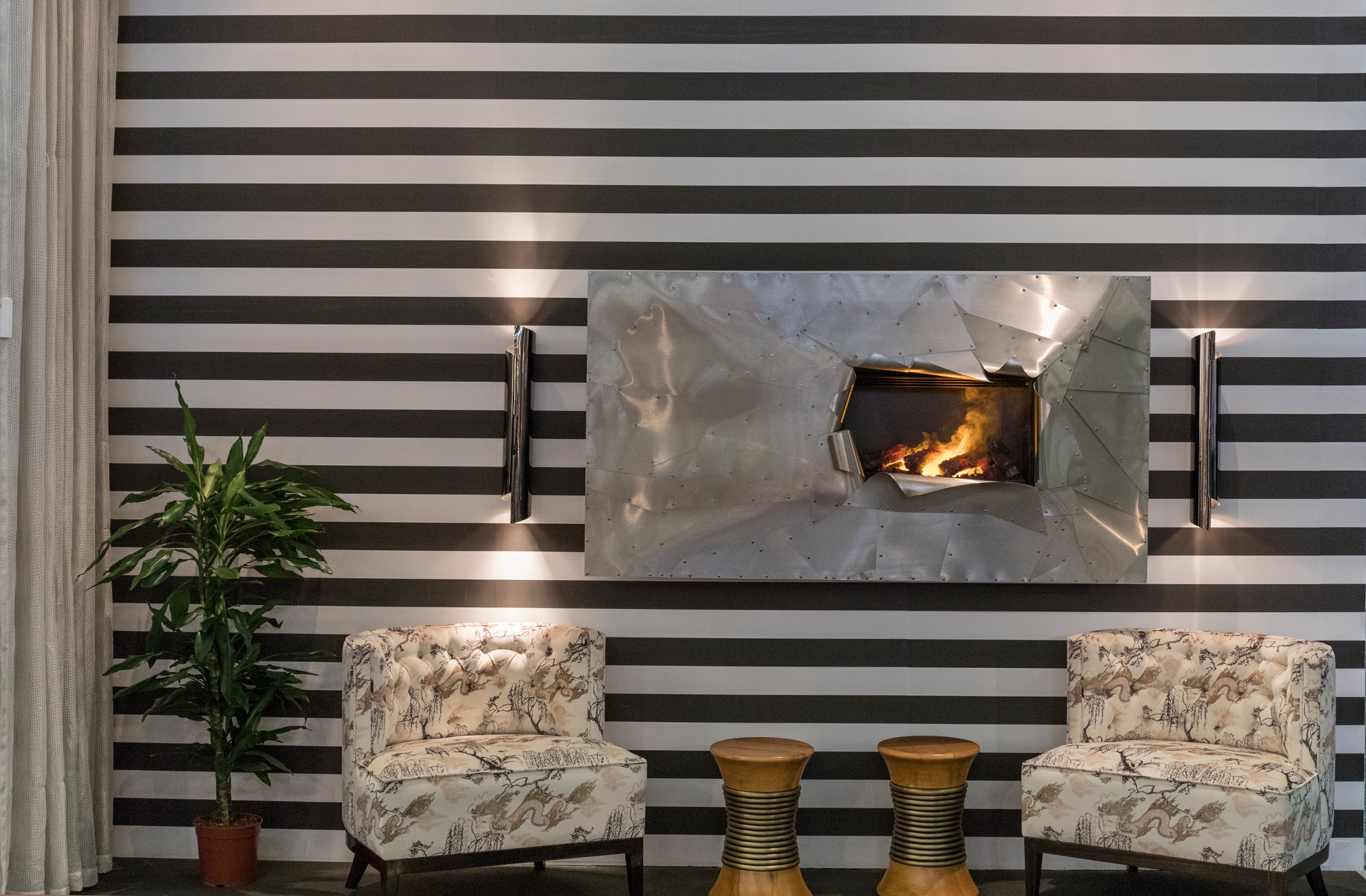
Photo courtesy of Brabbu Design Forces
4. The Avant-Garde Fireplace
For the more eclectic, a fireplace can also become a piece of art. Instead of a simple or elegant design, tough material such as metal and less-common designs can add the perfect conversation piece to any room.
This fireplace in this living room adds a bold style that is not just a functional piece of the home, but a work of art in it of itself. The layers of metal that are perceived to have been peeled back to open up the fireplace, which adds a unique addition to the piece. With a bold wallpaper in the background and dramatic lighting, this style is for the most creative and eclectic individual.
3. The Space-Saver Fireplace
For those who live in apartments or are simply looking to save a bit more space, don’t rule out the possibility of having a fireplace in your home. For a more eclectic style while also saving space, look toward the stove fireplace. This style blends seamlessly into older-style apartments or spaces, and can add a pop of old-world flair to more modern rooms as well.
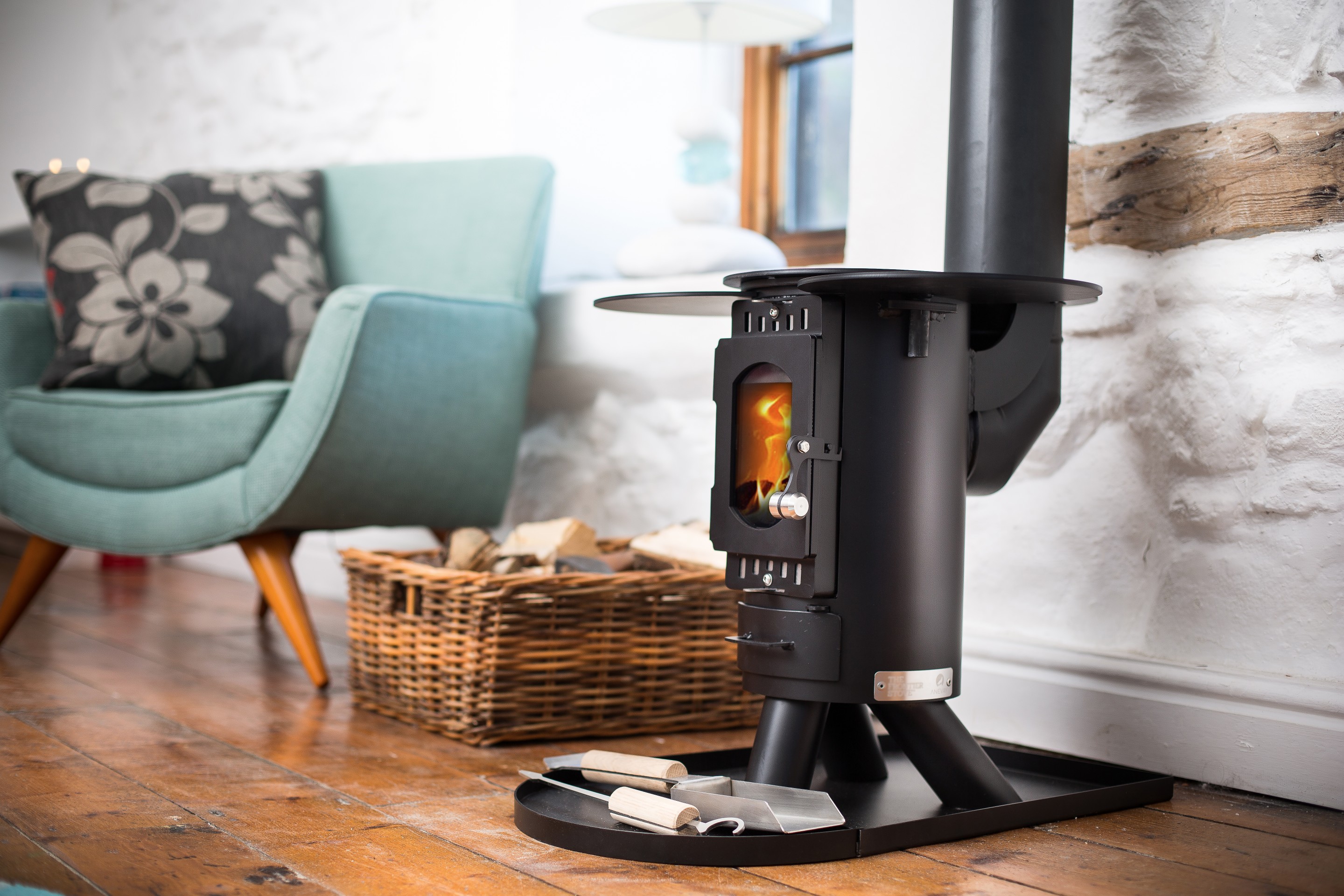
Photo courtesy of Ludlow Stoves
While the warm weather is slowly coming to a close in most of the country, greenhouses and conservatories are great for any type of weather. Both can add a beautiful, unique addition to any home — but what’s the difference, and how do you decide between the two?
While greenhouses are primarily meant to grow plants in a climate-controlled space, a conservatory is meant to be more of a living space where plants can grow in the same area. Here’s how to decide which would be better for your home:
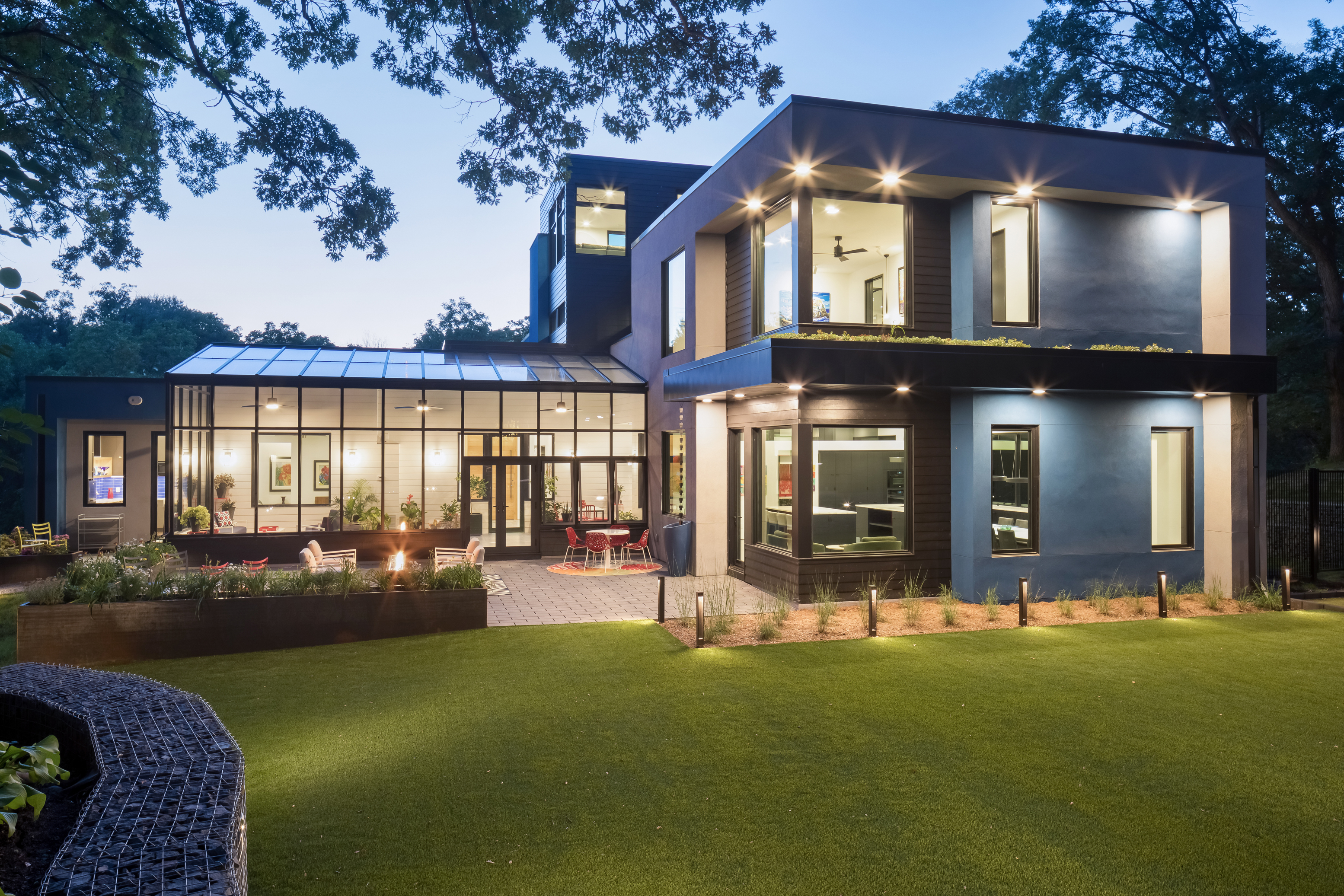
Photo courtesy of Conservatory Craftsmen

Photo courtesy of Conservatory Craftsmen

Photo courtesy of Garden Trading
1. Use of Space
If you’re looking for extra living space in the home, a conservatory would work better. Add couches and benches for comfortable seating in a relaxed atmosphere. The glass walls allow in the much-needed light to create the bright, refreshing atmosphere for you to relax in.
If you’re interested in cultivating plants and produce, a greenhouse is a better fit. While it won’t add another seating area to your home, it will contribute to the uniqueness of the home allow those who love gardening to continue their hobby all year round.
2. What are Your Hobbies?
For the green thumb, adding a greenhouse to the home is always a step in the right direction. The main purpose for the area is to cultivate plants regardless of the weather outside, which will keep the hobby alive during all seasons of the year. Used solely for growing plants, it’s important to understand the commitment involved with keeping a greenhouse alive. The space requires upkeep, which may only be enjoyable for someone who loves gardening.
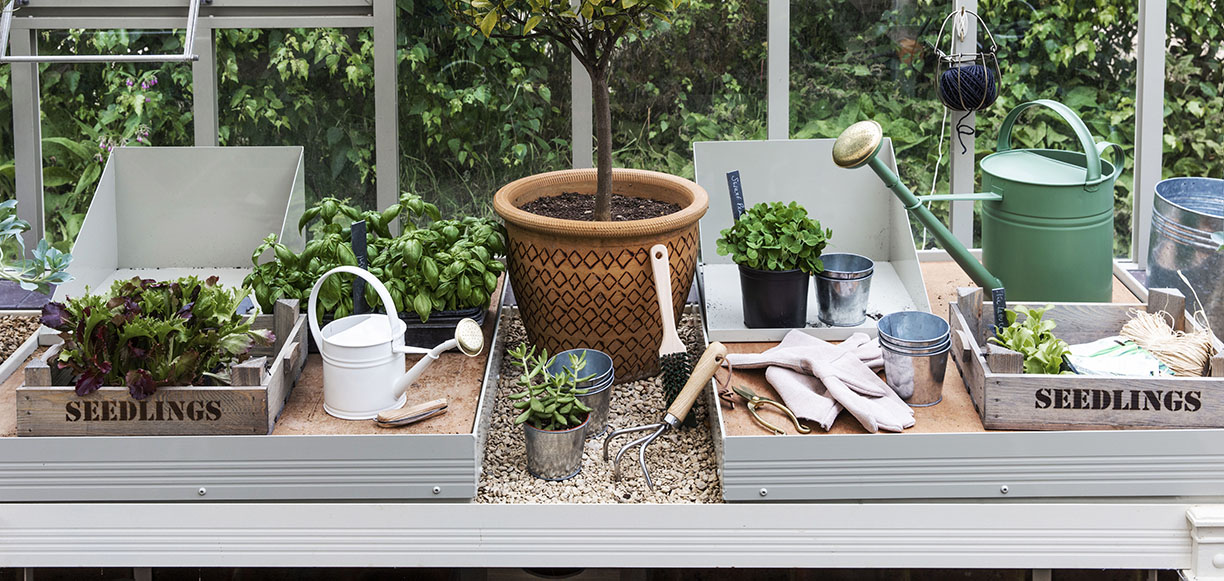
Photo courtesy of Garden Trading
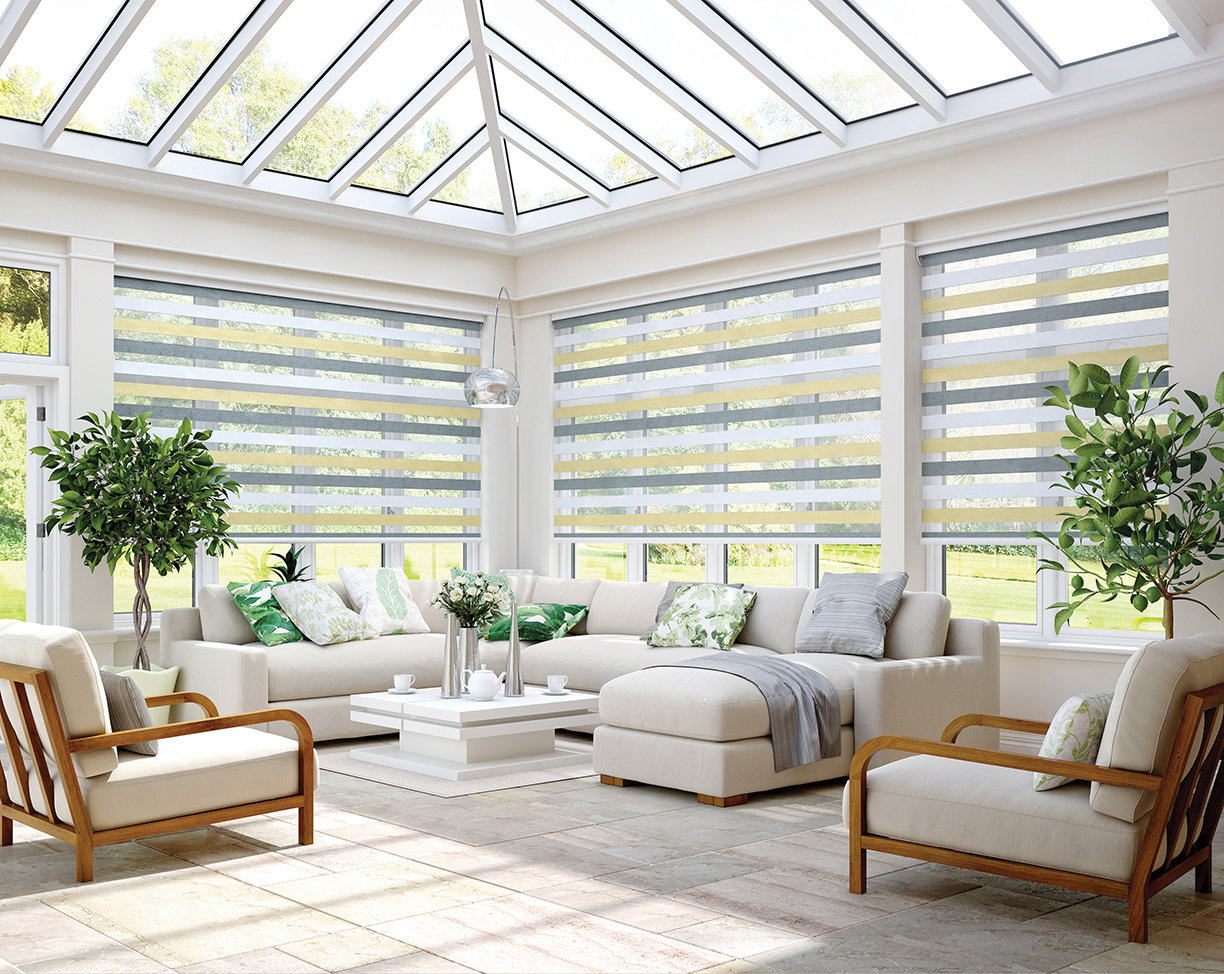
Photo courtesy of English Blinds
For the person who likes to read and relax more than garden, a conservatory might be a better fit. While still allowing the individual to connect with nature, they don’t have to be as involved as a greenhouse owner would.
3. Atmosphere is Everything
The atmosphere in a greenhouse would be much different than in a conservatory. Look toward a greenhouse if a more nature-oriented atmosphere centered on gardening is desired.
Meanwhile, a conservatory will have a more finished and refined atmosphere with its furnishings. While still oriented around nature and the plants it holds, it is much less involved in the gardening process and therefore has a more polished atmosphere than a greenhouse.
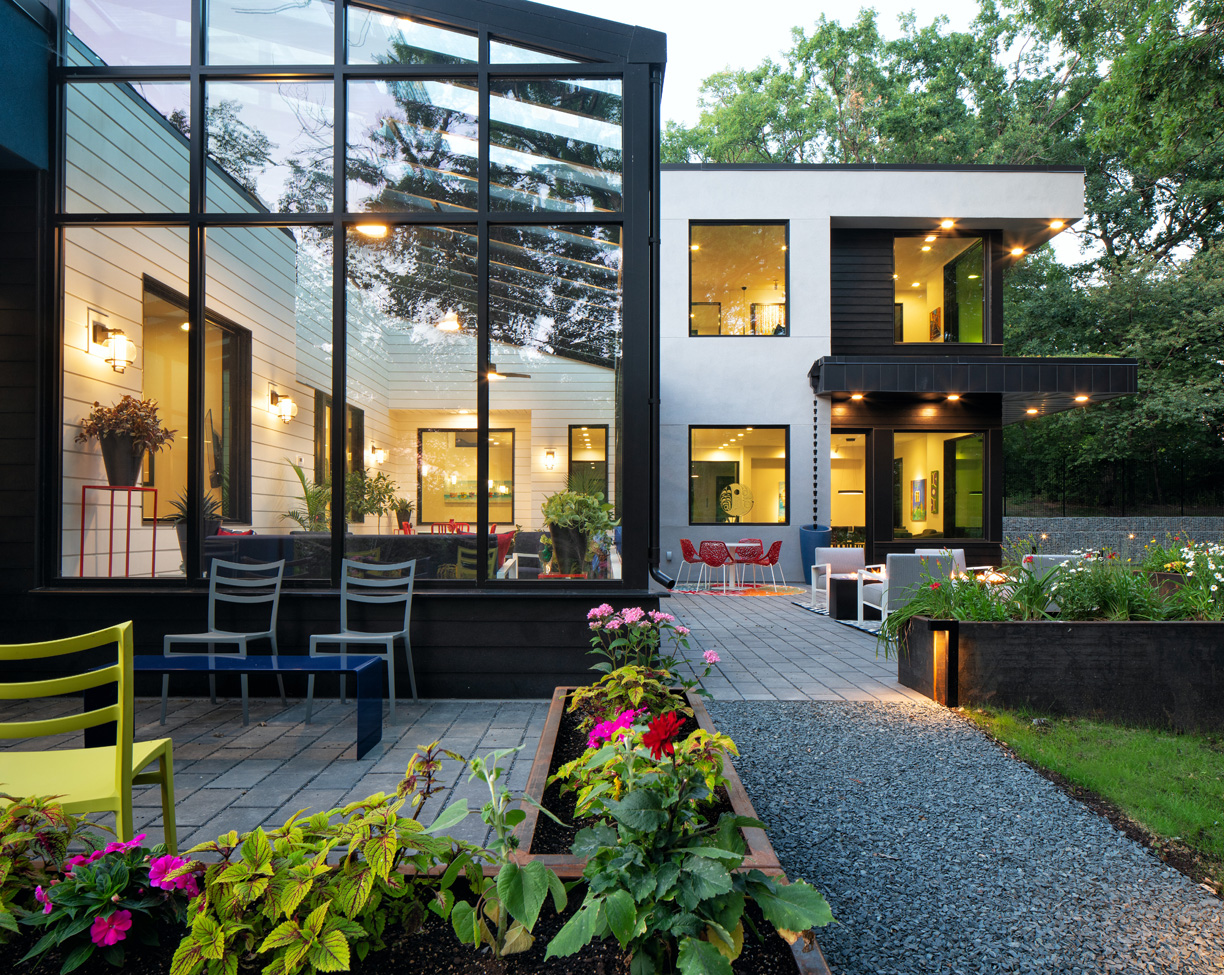
Photo courtesy of Conservatory Craftsmen
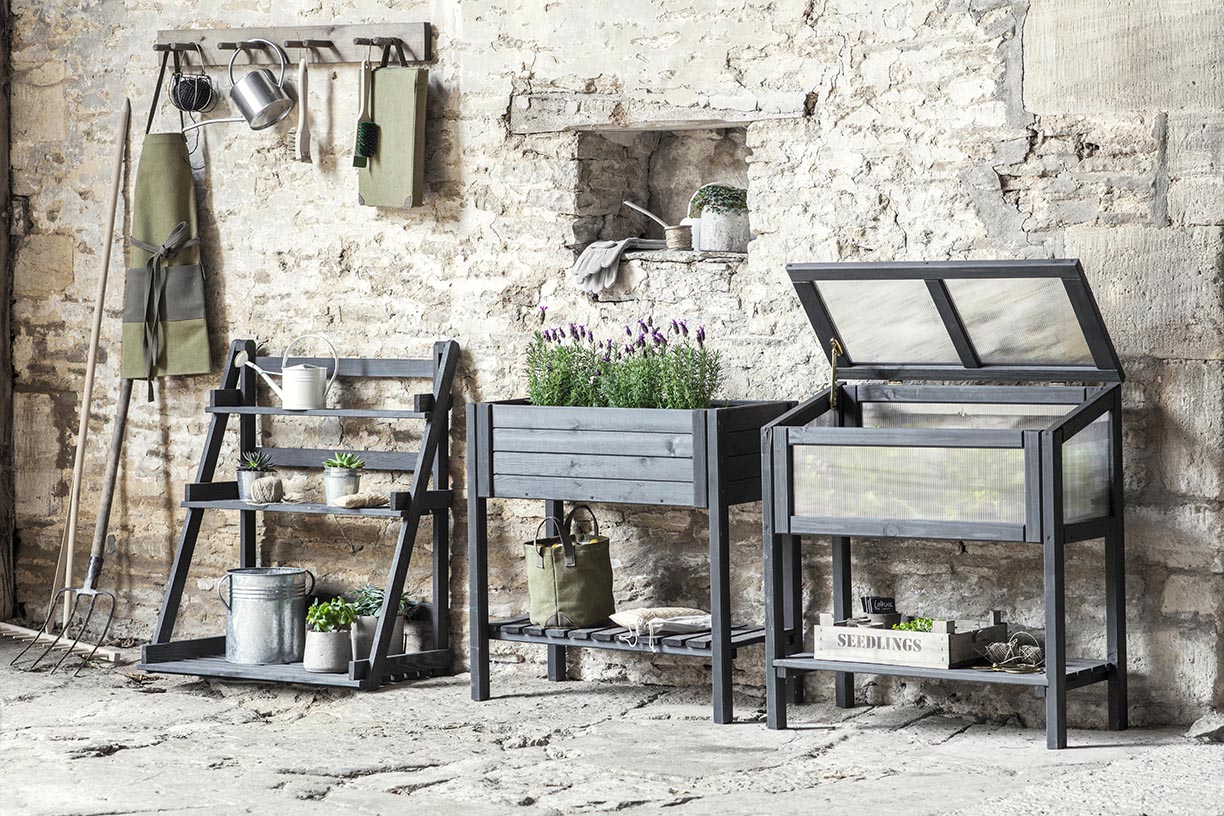
Photo courtesy of Garden Trading
4. Overall Style
For a more modern and refined style, a conservatory is the right direction — while involved in nature, it is primarily meant for relaxing near the outdoors during any season of the year.
While both add a unique addition to any home, a greenhouse is a niche space for those who love nature and gardening during all seasons of the year. For a more eccentric look, a greenhouse is the perfect fit.
With the last few weeks of summer ahead, now is the perfect time in much of the country to embrace the warm summer days and spend time in the sun. A perfect outdoor dining area can allow you to spend more time with family and friends and soak in the sun at the same time. Here are a few tips to design the area that will best work for you and your home:
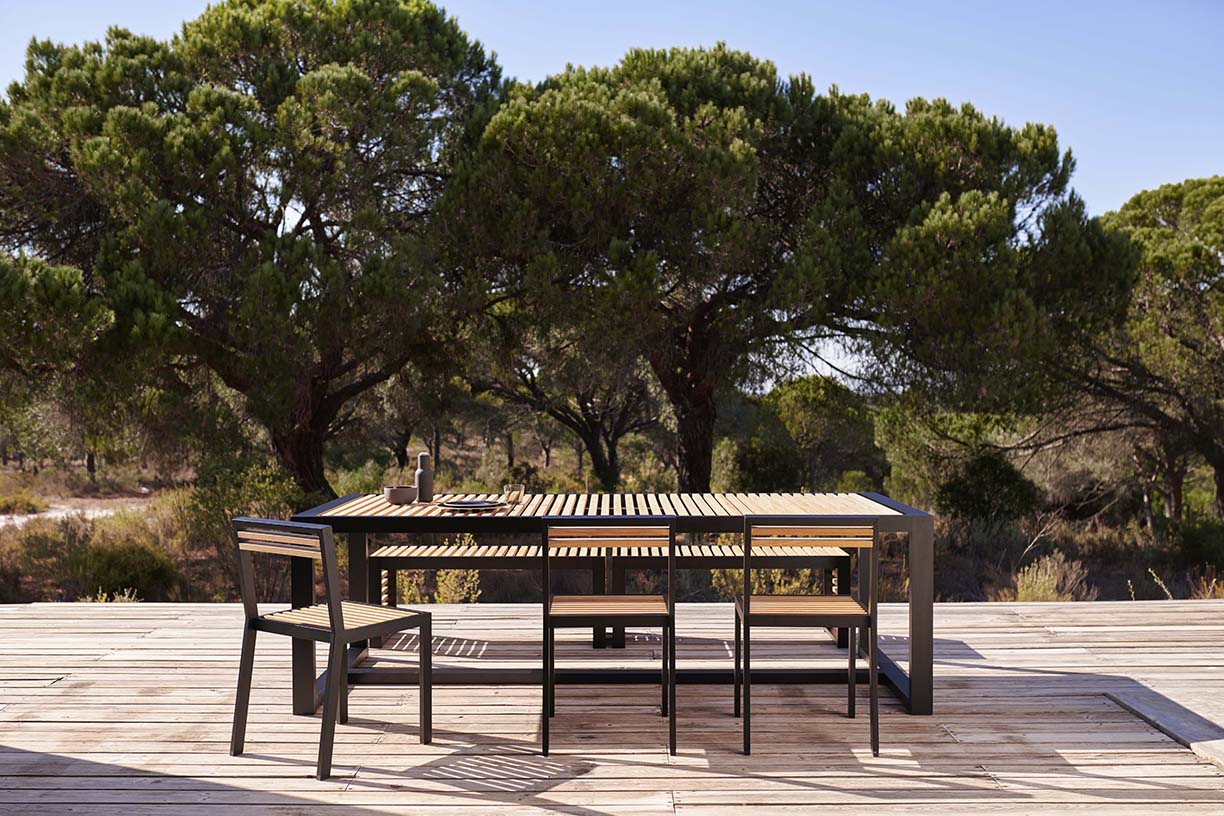
Photo courtesy of Chaplins Furniture
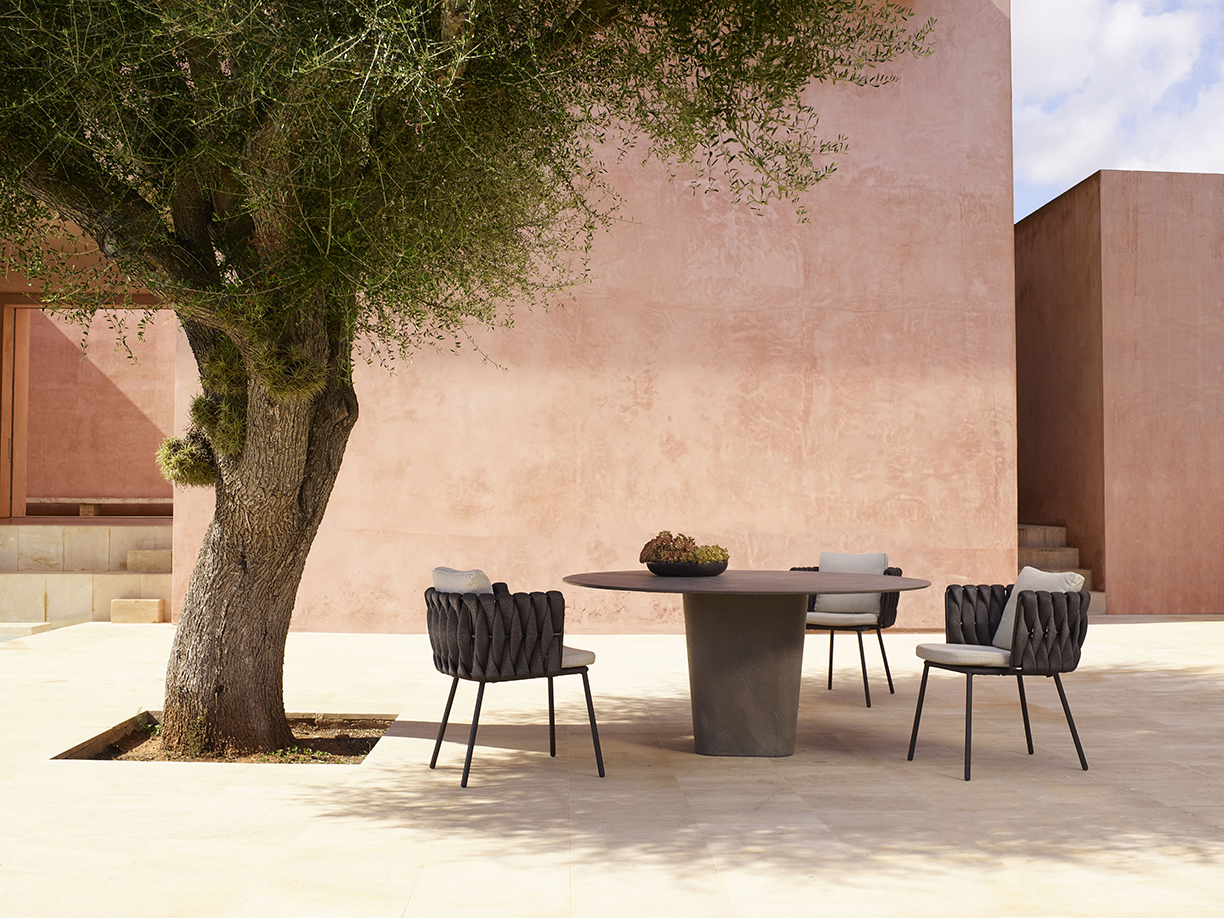
Photo courtesy of Go Modern
1. Consider the Colors
It’s always important to take into account the colors of the outdoor area. If the outdoor area is more centered around nature, consider more earthy colors that blend right into the background, creating a soft, calm atmosphere. For a bolder style, however, pick a color that contrasts sharply against the background.
With this area, the lighter pinks and tans behind the dark table and chairs create a beautiful distinction of colors. Whichever your style, make sure to consider various colors in your design process.
2. Working with the Landscape
When working with nature, there are mainly two choices: working with the land or changing the landscape to fit your needs. Keeping the land untouched will allow for a more natural atmosphere, while changing the landscape may be more accessible and practical for an outdoor dining area.
For example, this bench by the pool allows a great lunch or dinner with family and friends. While nature is not emphasized, it creates a sleek, clean design that’s easily accessible to the house and pool, allowing for gathering around the table at any time.
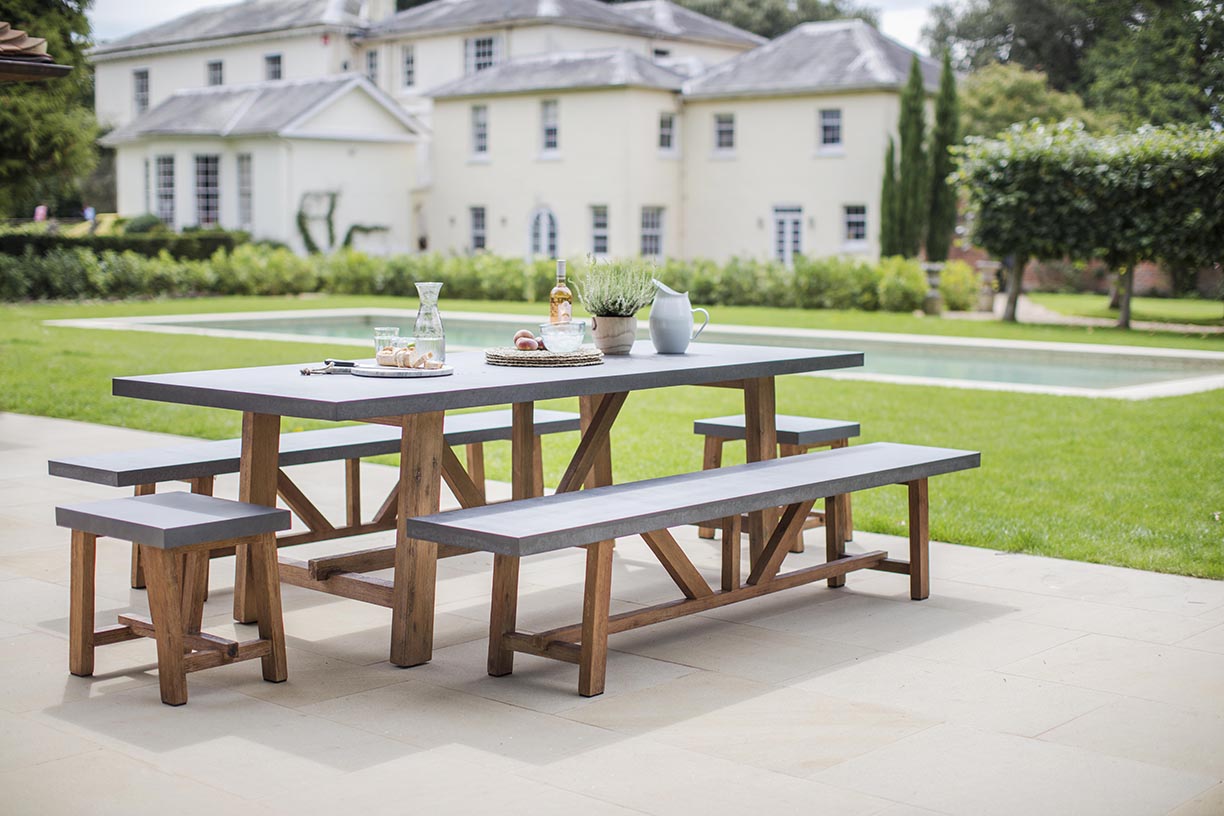
Photo courtesy of Garden Trading
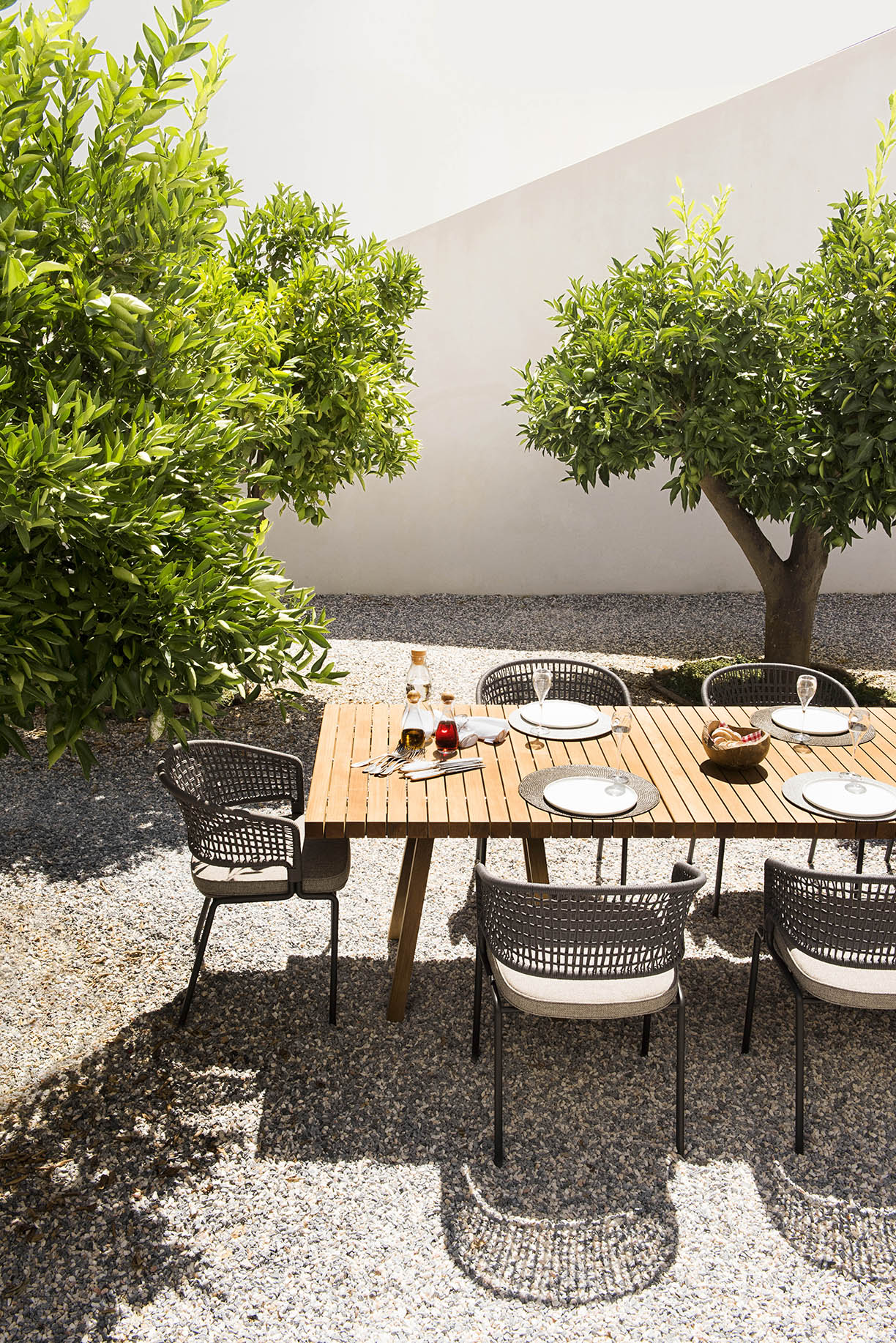
Photo courtesy of Go Modern
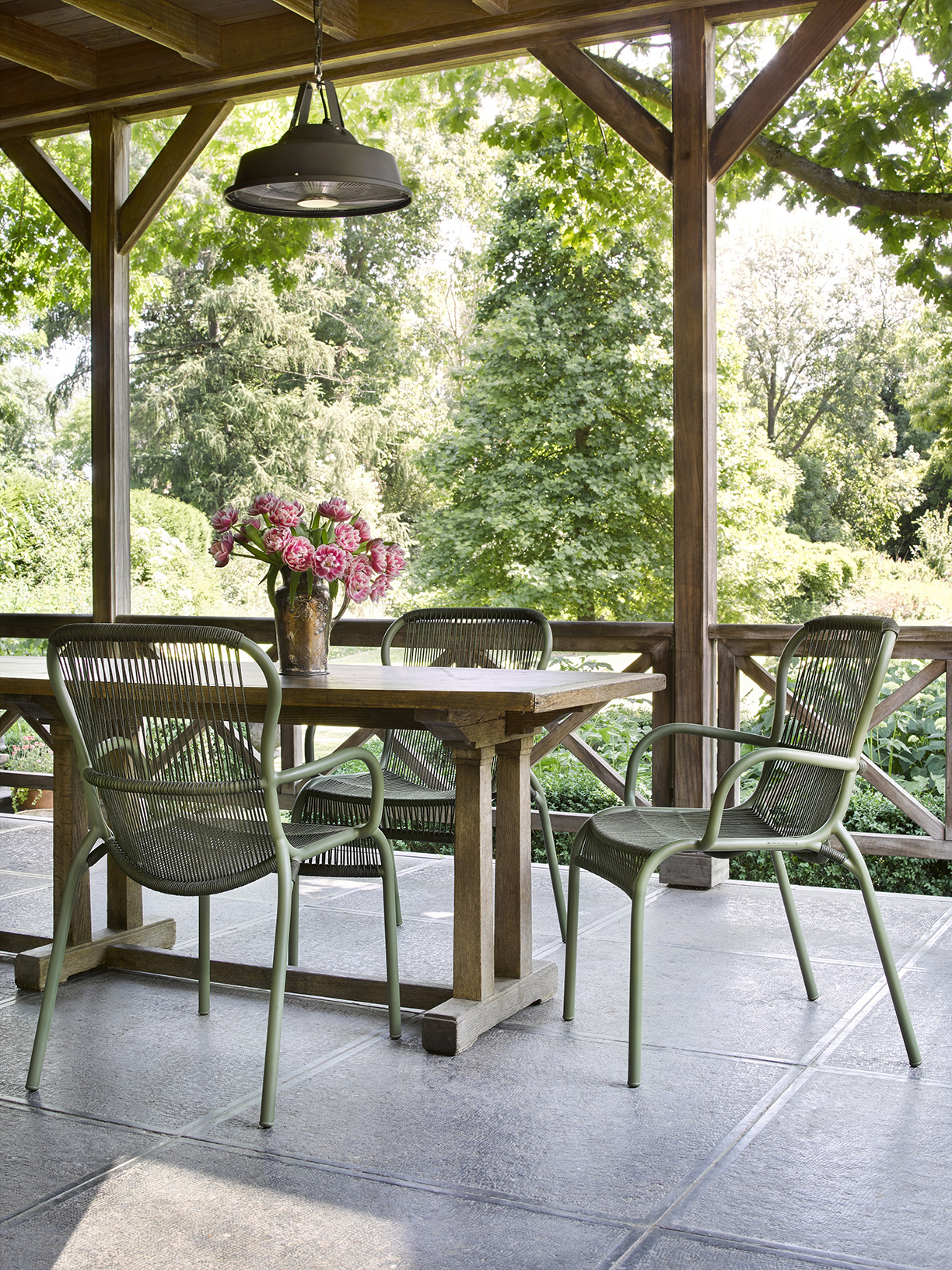
Photo courtesy of Lagoon
3. Creating Shade
While the idea of an outdoor dining area underneath the bright sun is important, practicality should always be a factor. With the sun out all day, it may get too hot to stay outside and enjoy the summer air. Remember to provide adequate shading, whether that’s with a tree or a canopy, so you and your guests are able to spend as much time outside as you would like.
This outdoor dining area was built with a roof for this exact purpose. Crafted with natural wood, it forms a calm atmosphere blocking the sun but keeping everyone close to the nature that surrounds them.
4. A Style that Fits You
Whatever the design, make sure that it fits your personality and will be used often for gatherings of family and friends.
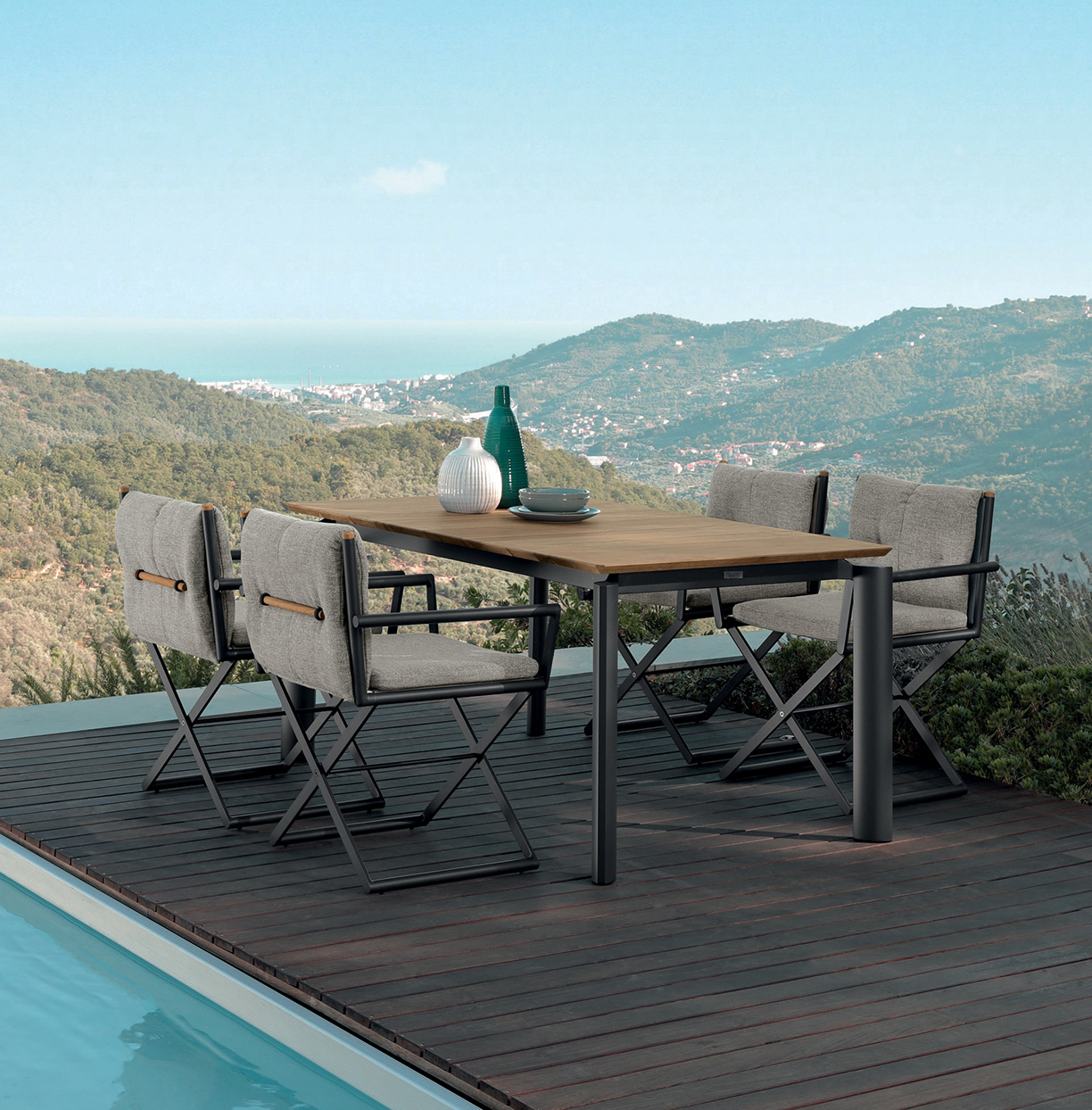
Photo courtesy of Lagoon
With a sleek, modern style becoming the new trend in home design, chandelier makers are turning from the traditional designs to modern light fixtures instead. Not only do they add an elegant and modern piece to the room, but they’re becoming pieces of art in their own right.
The creativity that goes into designing and manufacturing these modern chandeliers is pushing the boundaries on the line that constitutes furniture and works of art. With that said, here are some tips on choosing which modern chandelier is best for you:
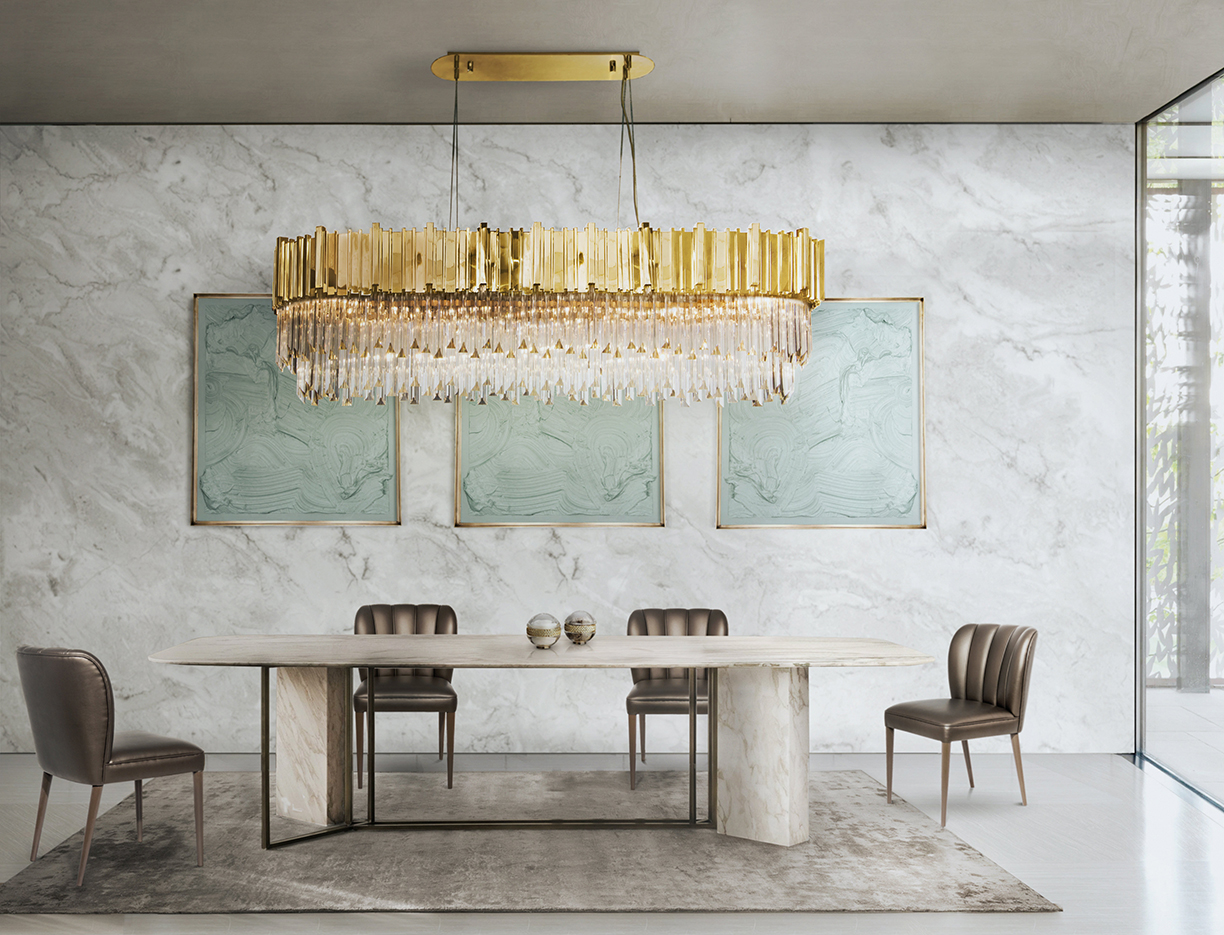
Photo courtesy of Covet NYC
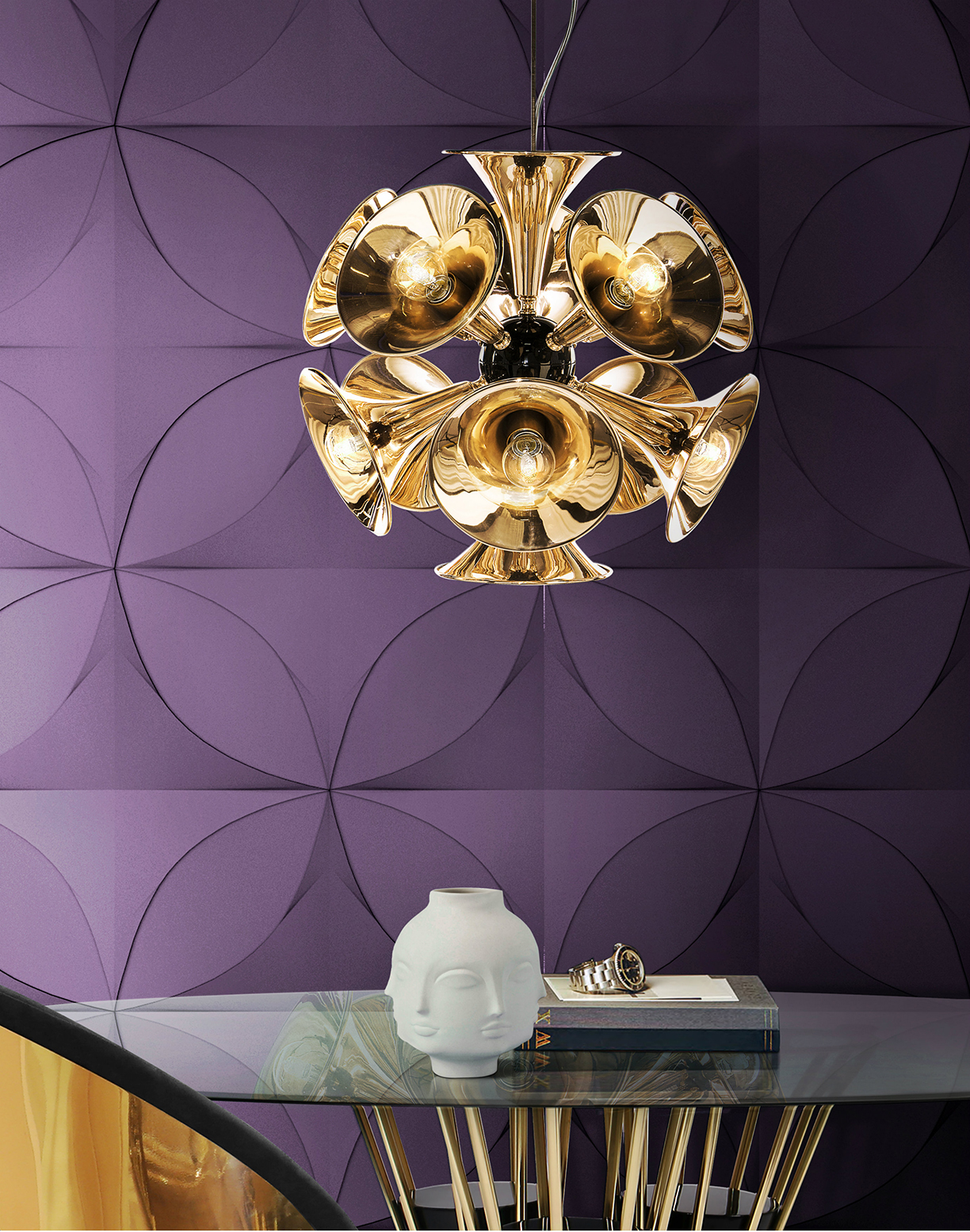
Photo courtesy of DelightFULL
1. Get Creative with Material
With any modern chandelier, the material matters. Getting creative with the material used to create the chandelier can add a great addition to the room’s decor. Creativity is proven to go a long way in designing the perfect modern chandelier.
The Botti pendant lamp, inspired by the American trumpet player Chris Botti, adds a fun twist by using trumpets as the main material of the chandelier. While still luxurious in its style and design, it adds personality and a conversation piece to the space. While the chandelier is more retro in its style, using a creative material and thinking outside of the box can be beneficial for whichever style is preferred.
2. The Space it Resides
Both small and large chandeliers can be a great addition to any space. It’s important, however, to consider the type of space when choosing which modern chandelier to include in it. For a foyer or room with high ceilings, look for a larger chandelier to create a major focal point. In spaces like dining and living rooms, a smaller chandelier will still be a work of art, yet it won’t take away from the rest of the design in the space.

Photos courtesy of Muse Residences
In recent years, more and more hotels and apartment buildings are getting rid of the traditional designs and replacing them with modern and sophisticated styles instead. The modern chandelier in this residential building is certainly the focal point, simply for its sheer size and elegance. When visitors and residents walk into the building, they are in awe of its design.
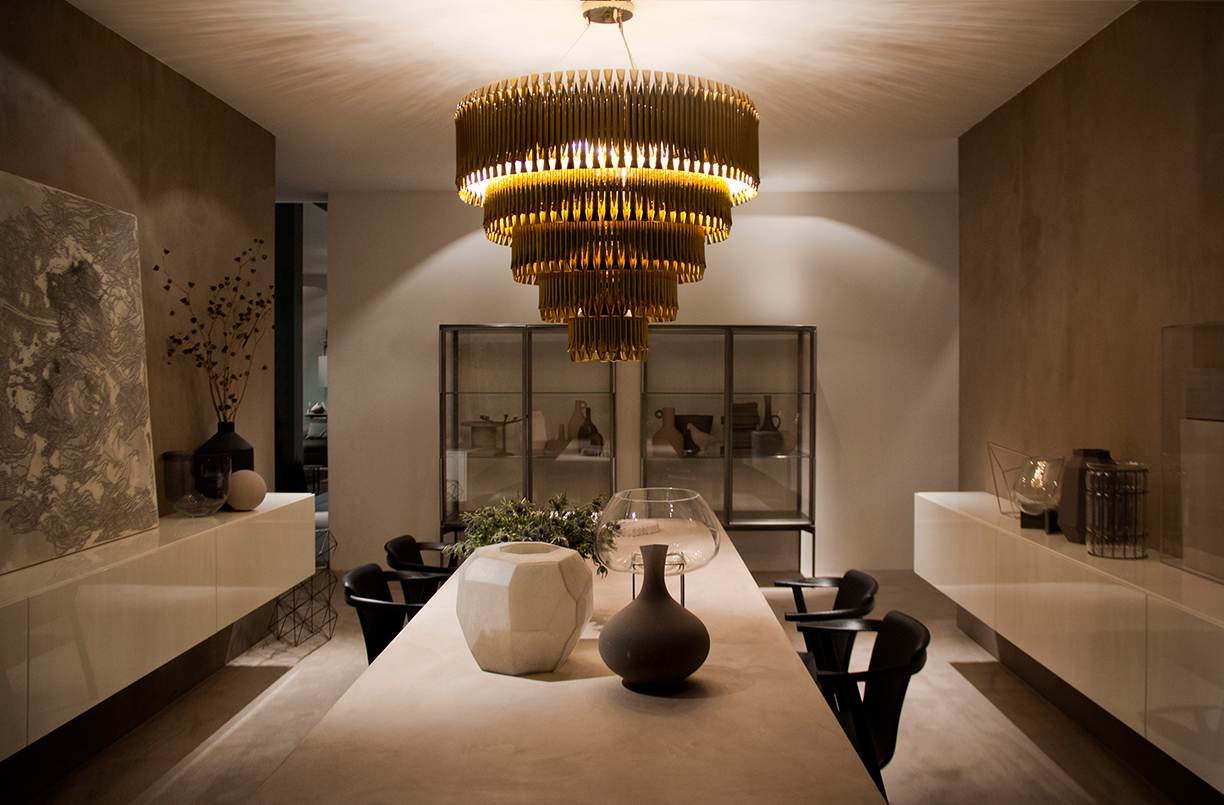
Photos courtesy of DelightFULL
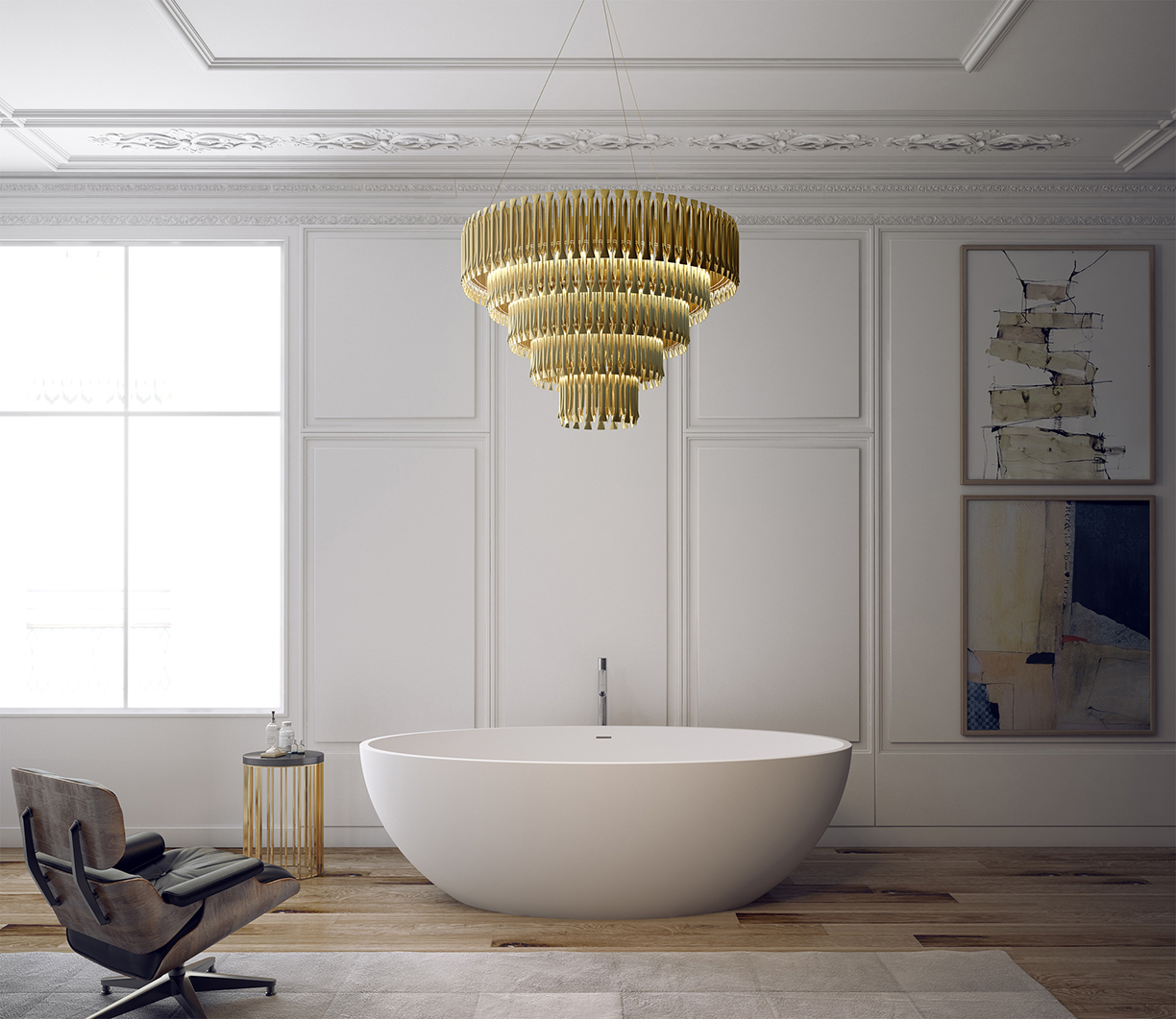
3. The Lighting
In terms of lighting, either a dramatic flair or a softer hue can be a great addition to any space. While the design and material of chandeliers can be similar, the lighting can make a major difference in the atmosphere in the space.
While the first chandelier provides a dramatic light in a darker room, the second provides a more subtle light in a room ample natural light. Both, however, add to the design and atmosphere of the space.
4. A Work of Art
Regardless of the material, design and lighting, it’s crucial to remember the creativity a modern chandelier allows. Whether it’s above a dining table, in the living room as a statement piece or the focal point of the foyer, modern chandeliers aren’t simply light fixtures anymore — they’re works of art.
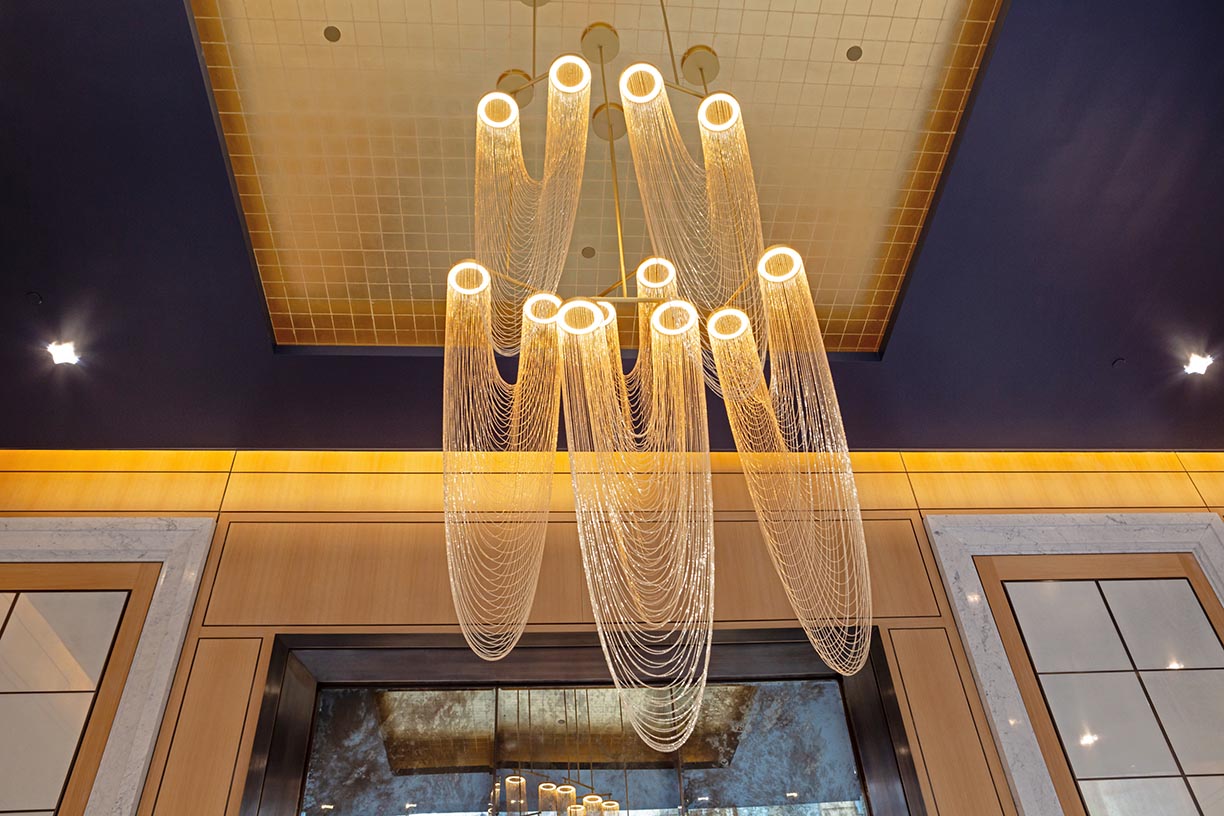
Photo courtesy of The Alyn
Whether you’re organizing that shoe collection that keeps on growing, displaying your endless accessories, or if you’re striving for a clean, minimalist style and feel, a little extra storage never hurt. Even pricey and luxurious apartments in places such as New York City aren’t offering much space.
Get inspired with these storage tips and find the perfect place for everything in your home.
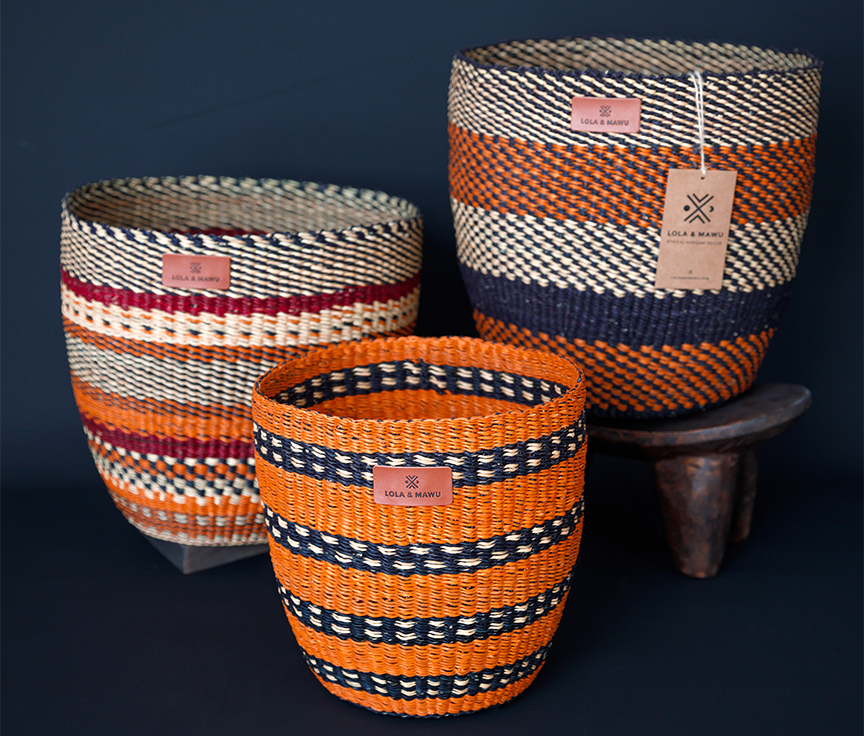
Photo courtesy of Lola & Mawu
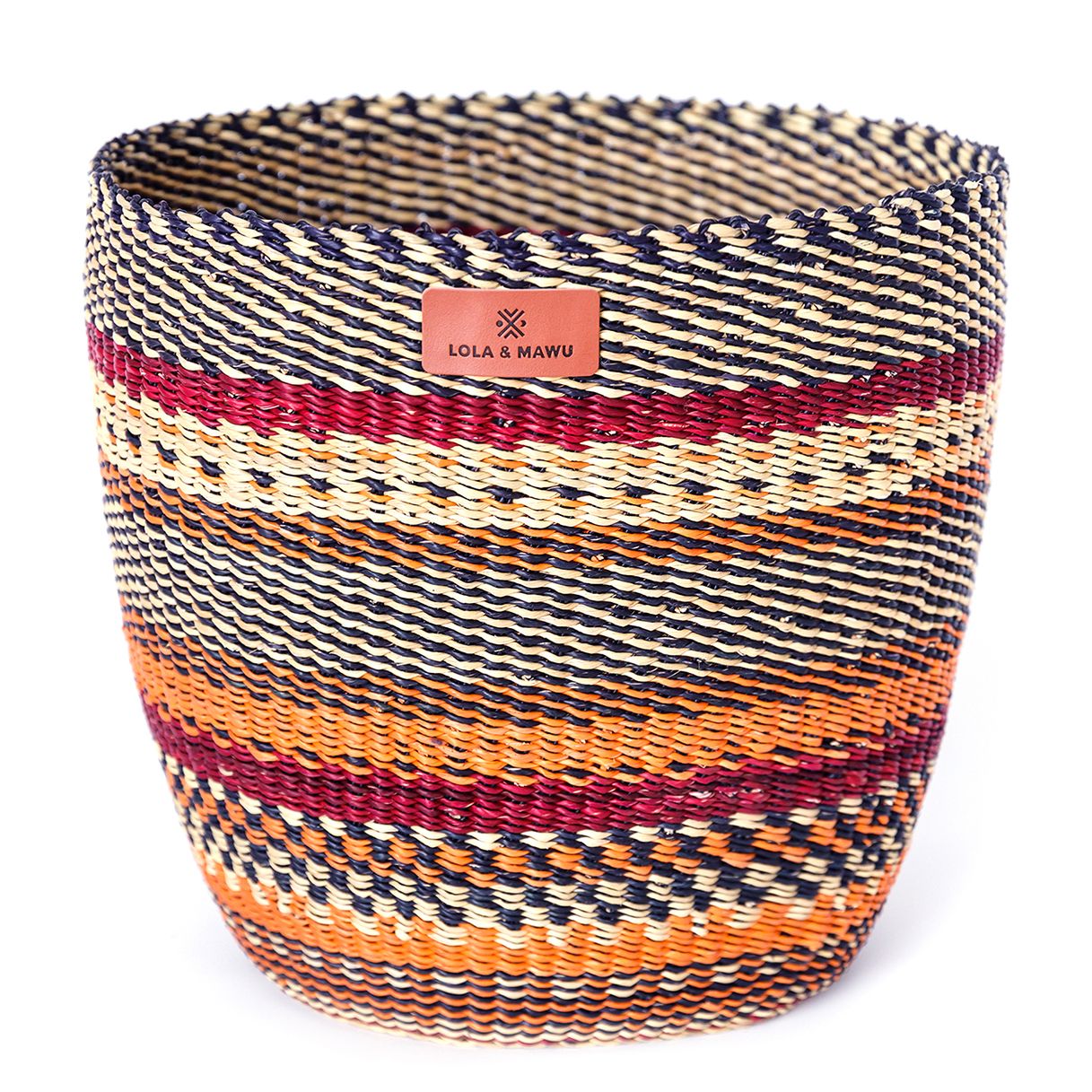
Photo courtesy of Lola & Mawu
Be bold and embrace your own style. Even if you are working toward a more neutral style with clean lines, it’s okay to introduce a few pops of color. Your storage is the perfect place to try new color schemes and patterns because they are easy to switch out and adjust with your growing taste and the changing seasons.
Portable, movable storage is the best kind of storage. The convenience of wheels should never be overlooked. If you’re hosting an event, entertaining guests, or simply looking for a fresh feel, storage that can be moved make the process of change seamless. Simply wheel a fun, stylish cart into the next room for all of your storage needs.
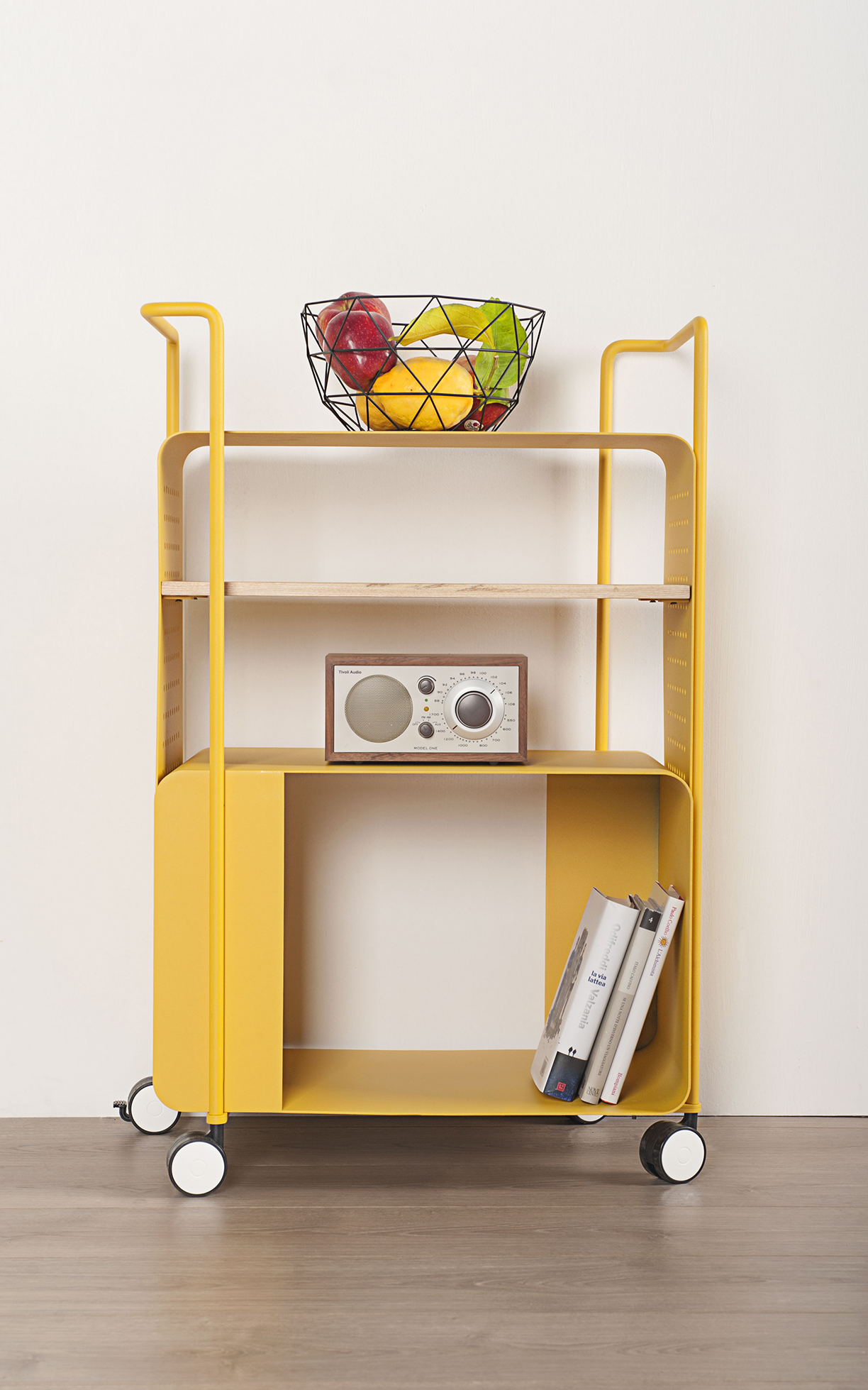
Photo courtesy of Lime Lace
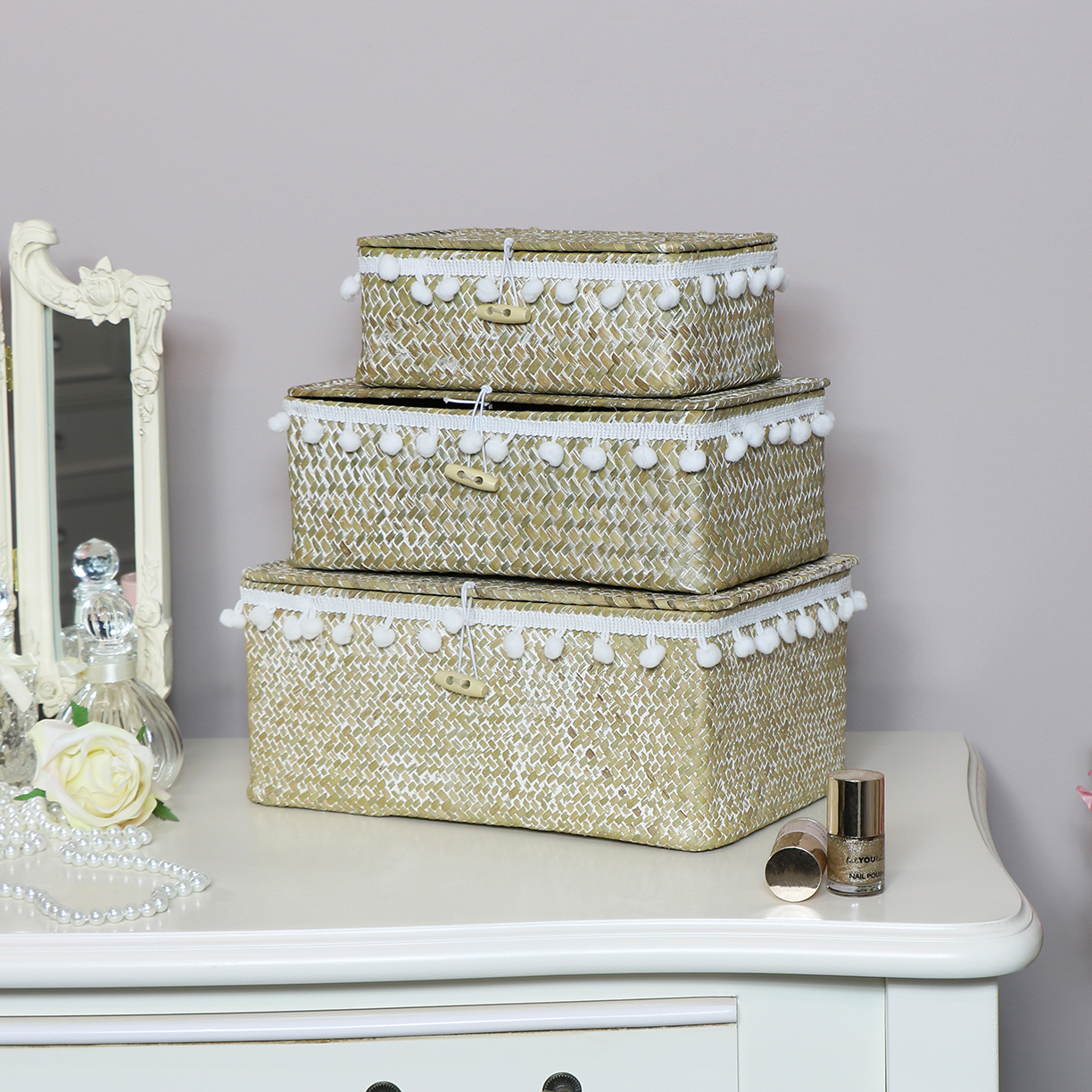
Photo courtesy of Melody Maison
There’s no shame in falling in love with storage space that is not the most functional. A few stacked baskets with a playful touch of fringe is a nice addition to your bedroom or bathroom. The layered look adds complexity and style to your room, and it can still be functional for small items and accessories.
When in doubt, try under the bed. The space below your bed was made for storing blankets, shoes, winter sweaters and more. Built-in storage is even less noticeable under your bed and ensures that you’ll always have a little extra room to stash your bulkier items or less used items. These clever built-in draws will help clean up any bedroom.
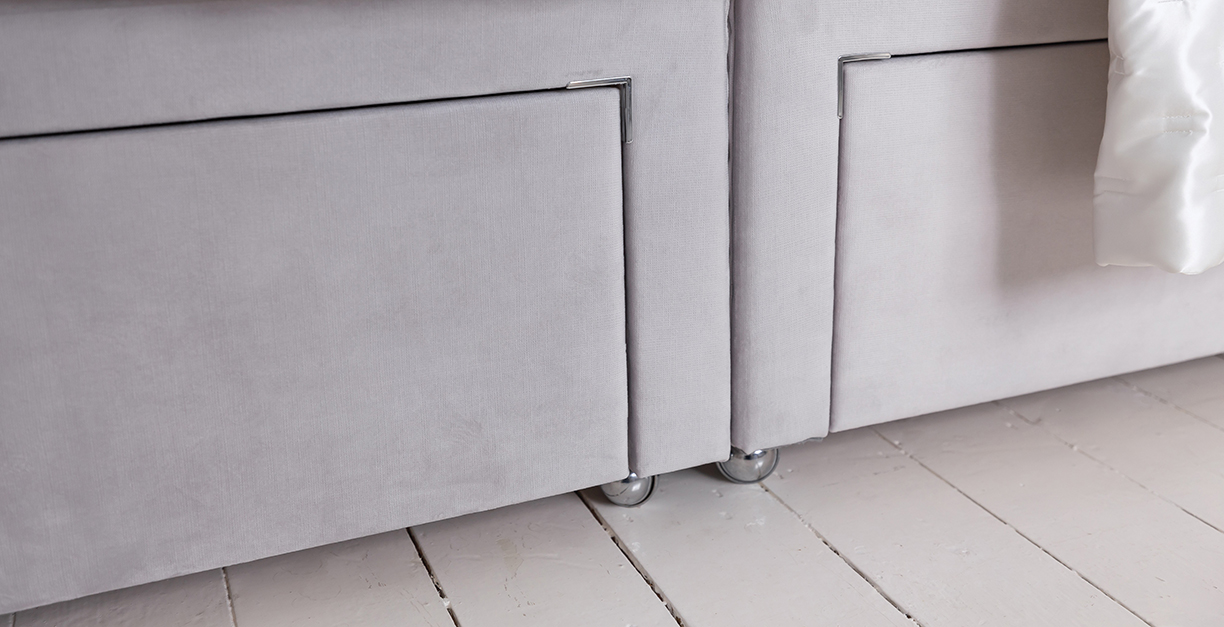
Photo courtesy of The French Bedroom Co.
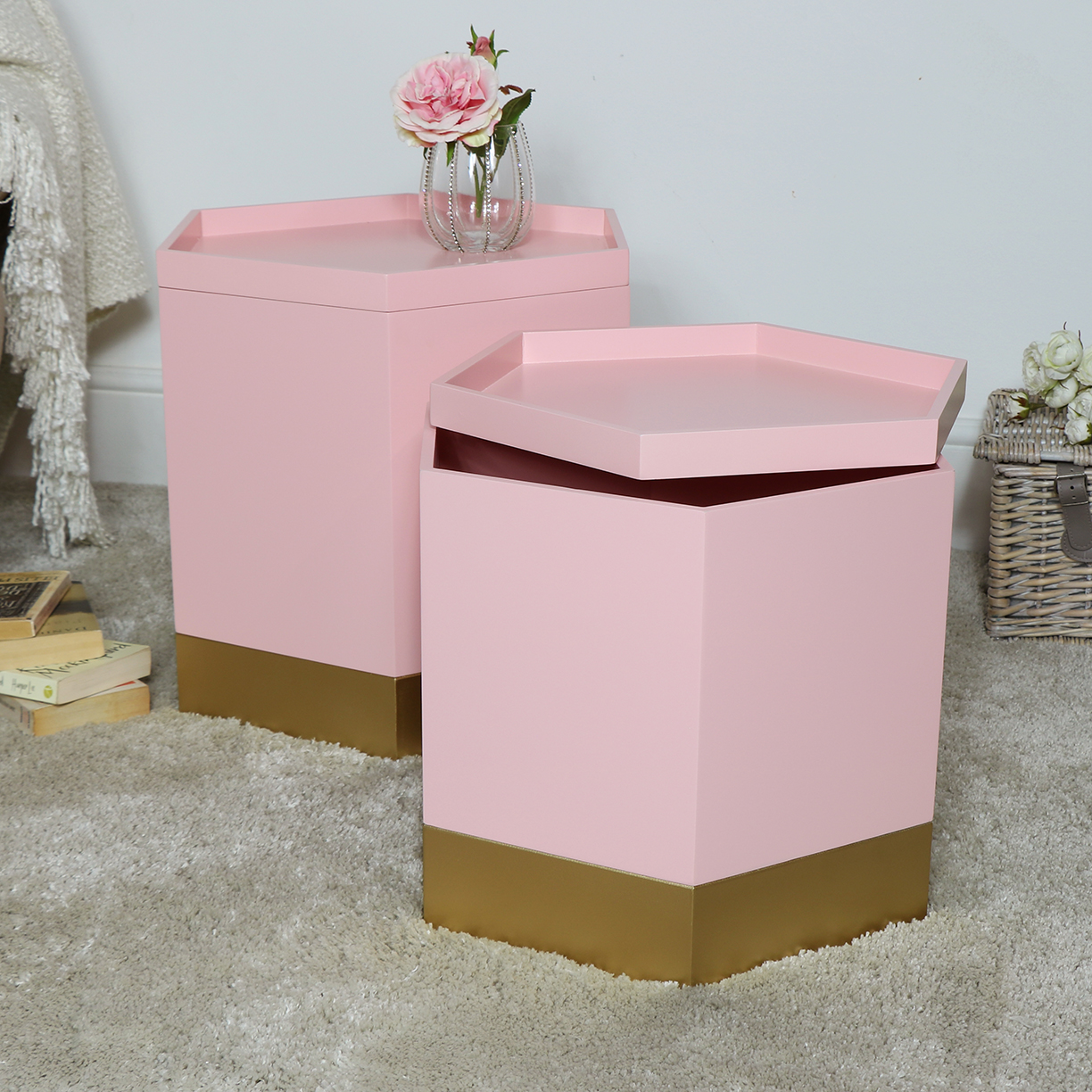
Photos courtesy of Melody Maison

Multi-functional is never a bad thing. Side tables, ottomans, benches, and other furniture that offer a hidden storage section is a dream come true. Forget searching for bulky storage options that take up space and ruin your decor. Find a charming side table that serves as a storage unit to declutter any room.
Boho may bring overwhelming patterns and a mix and match style of colors to mind but these refined expressions of boho are bringing a whole new touch of elegance and class to the term.
Choose the bohemian blend that is perfect for you and your home.
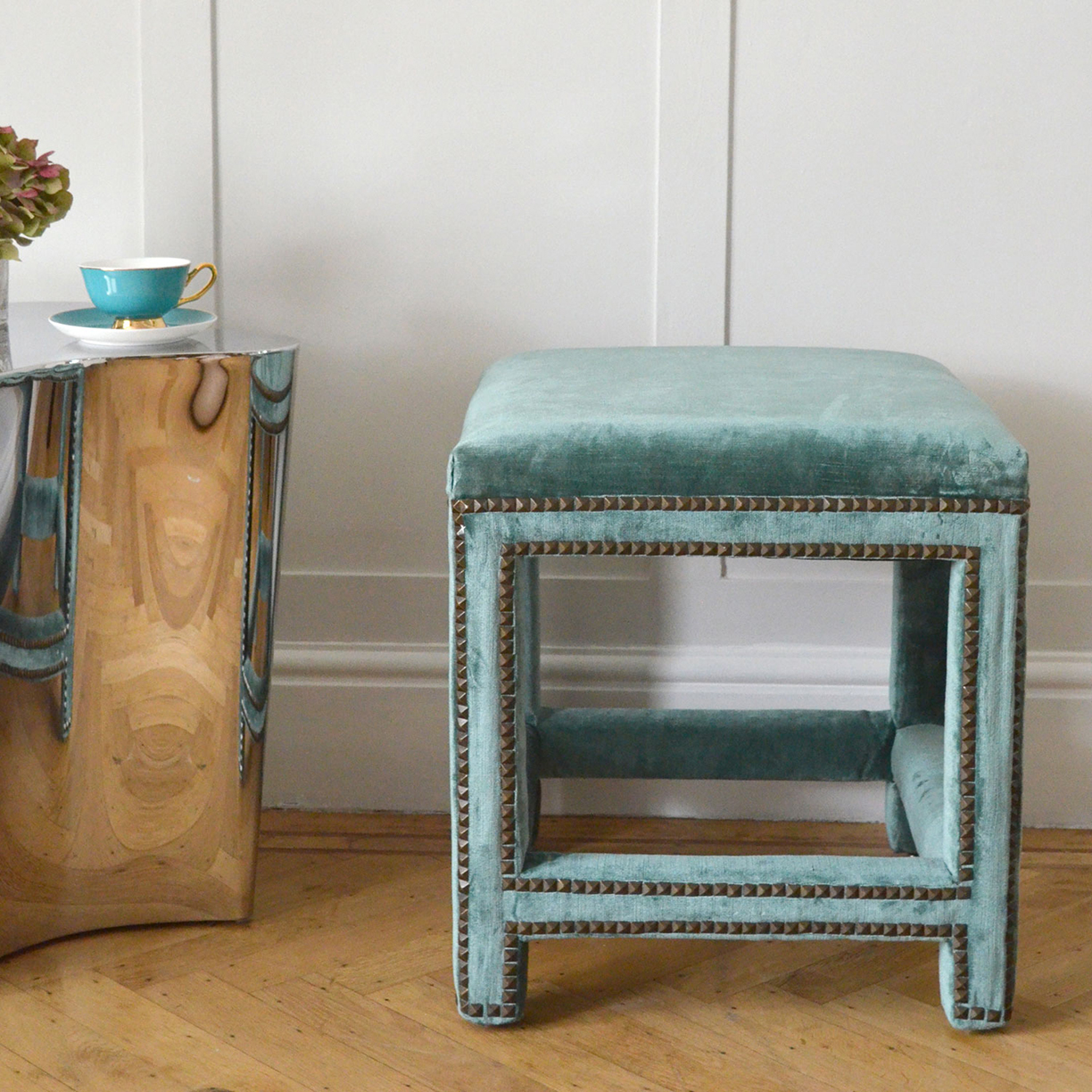
Photo courtesy of Sweetpea & Willow
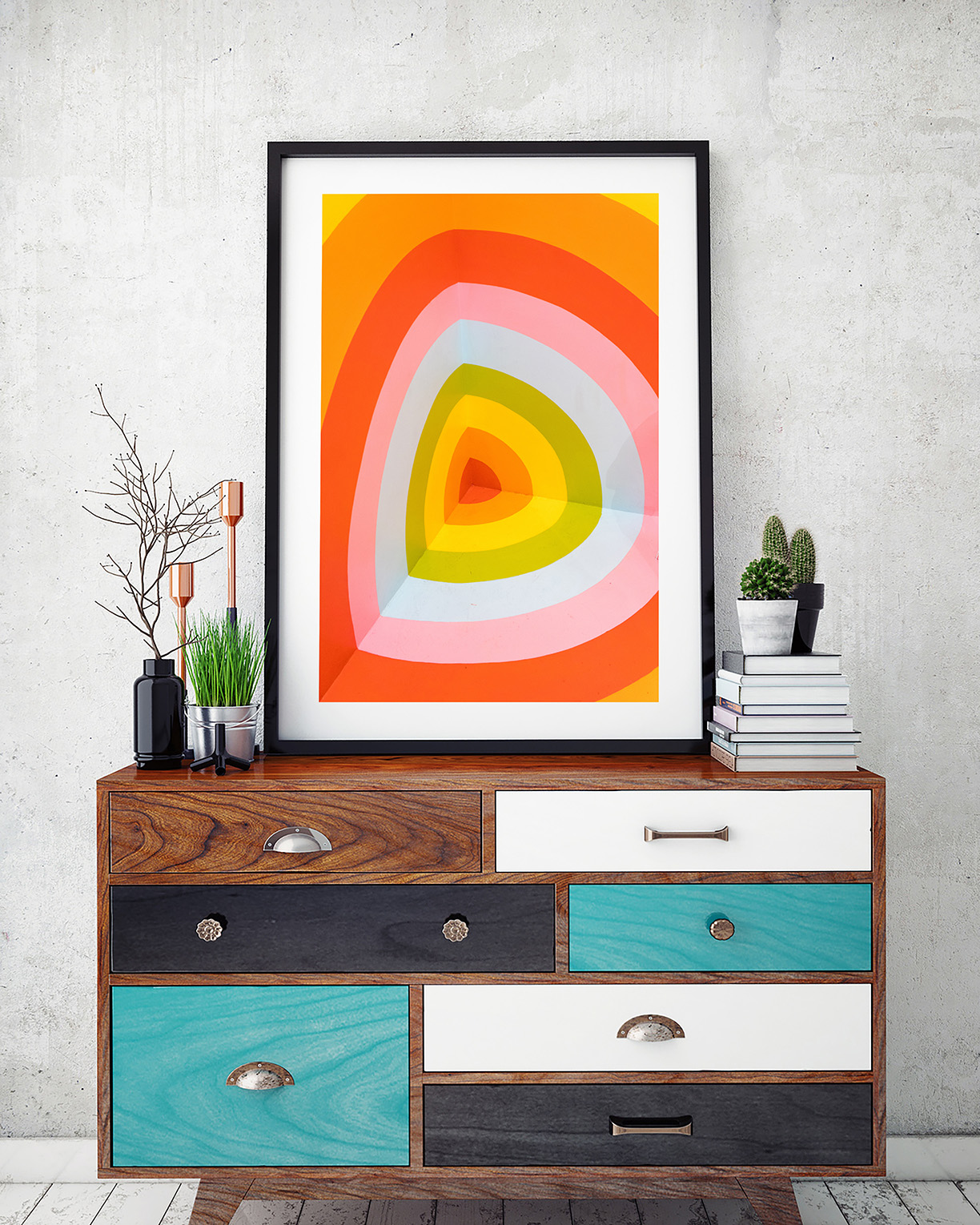
Photo courtesy of ABSTRACT HOUSE
African Boho
When many people think of boho style, they think of African inspired bohemia, namely the bright colors, clashing prints and metal tones that are often introduced into the décor of a boho themed living space. Include lanterns, jewel-colored cushions, and ottoman style seating to achieve this laid back vibe.
European Boho
European boho is a little more refined in its mix and match approach, though strives to look spontaneous. European style boho is characterized by vintage style furniture paired with rustic beaded curtains and quirky wall art. Layers, mixed fabrics, and statement wall décor will make or break this look.
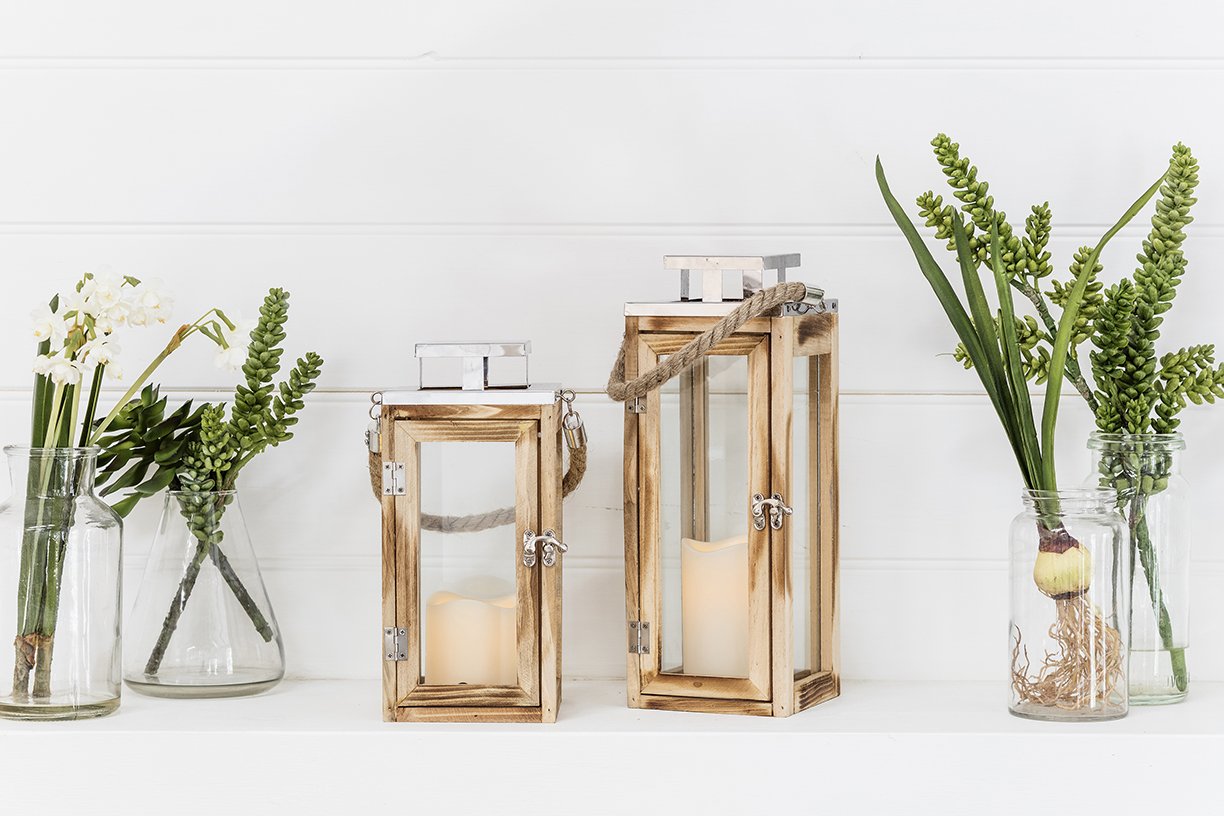
Photo courtesy of Lights4fun
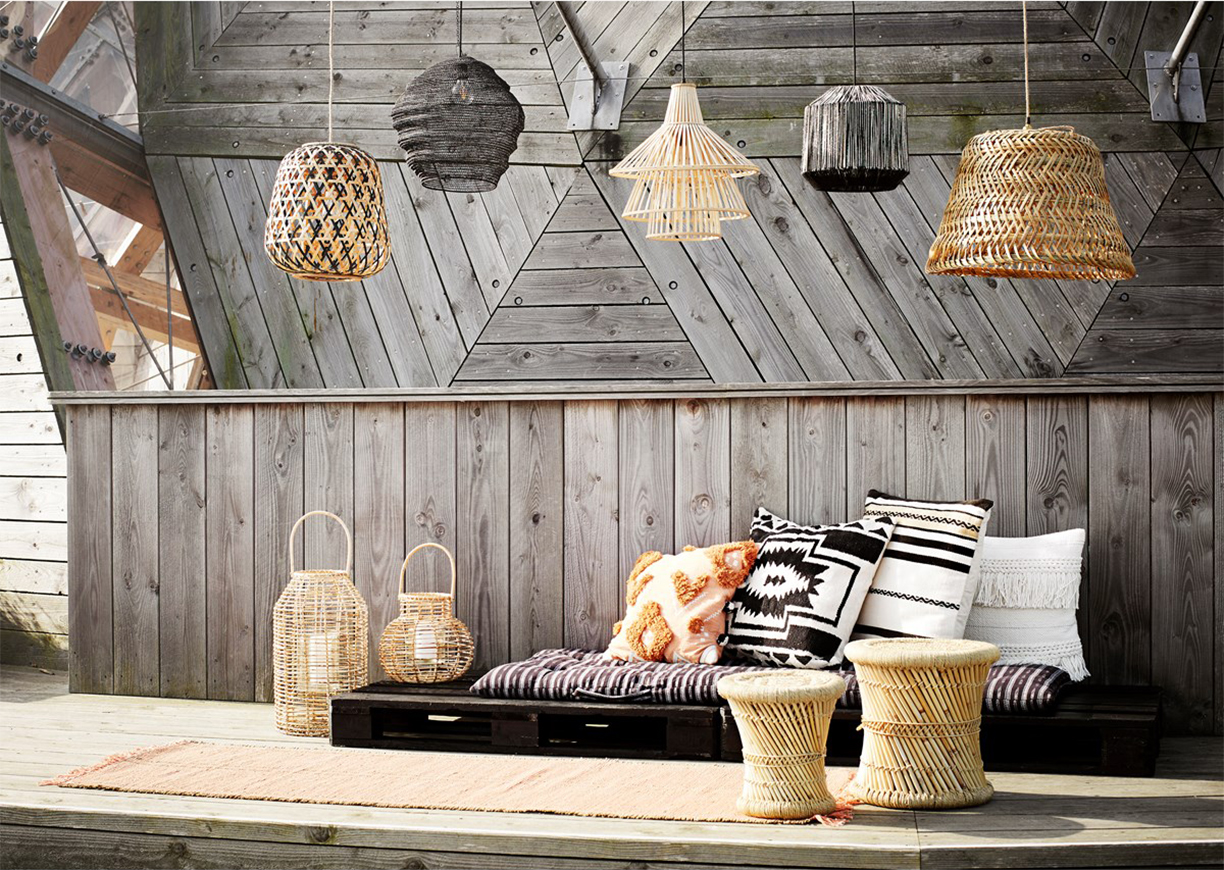
Photo courtesy of Flo & Joe
Western Boho
The 1960s and 70s saw a resurgence in bohemian style, one that was influenced by community living that became a prominent characteristic of the counter culture. The western bohemian style relies heavily on natural materials and fabrics to complete the aesthetic. Think exposed beams, tribal prints and pouffe’s or floor cushions rather than traditional seating.
Contemporary Boho
So what’s happening now with Boho style? Contemporary Boho style borrows from its processors but combines elements of the classic boho styles with modern minimalist living. Think white walls and floors, wicker seating and animal head wall art. Cushions and rugs add splashes of color while décor pieces can range from vintage to African to contemporary.
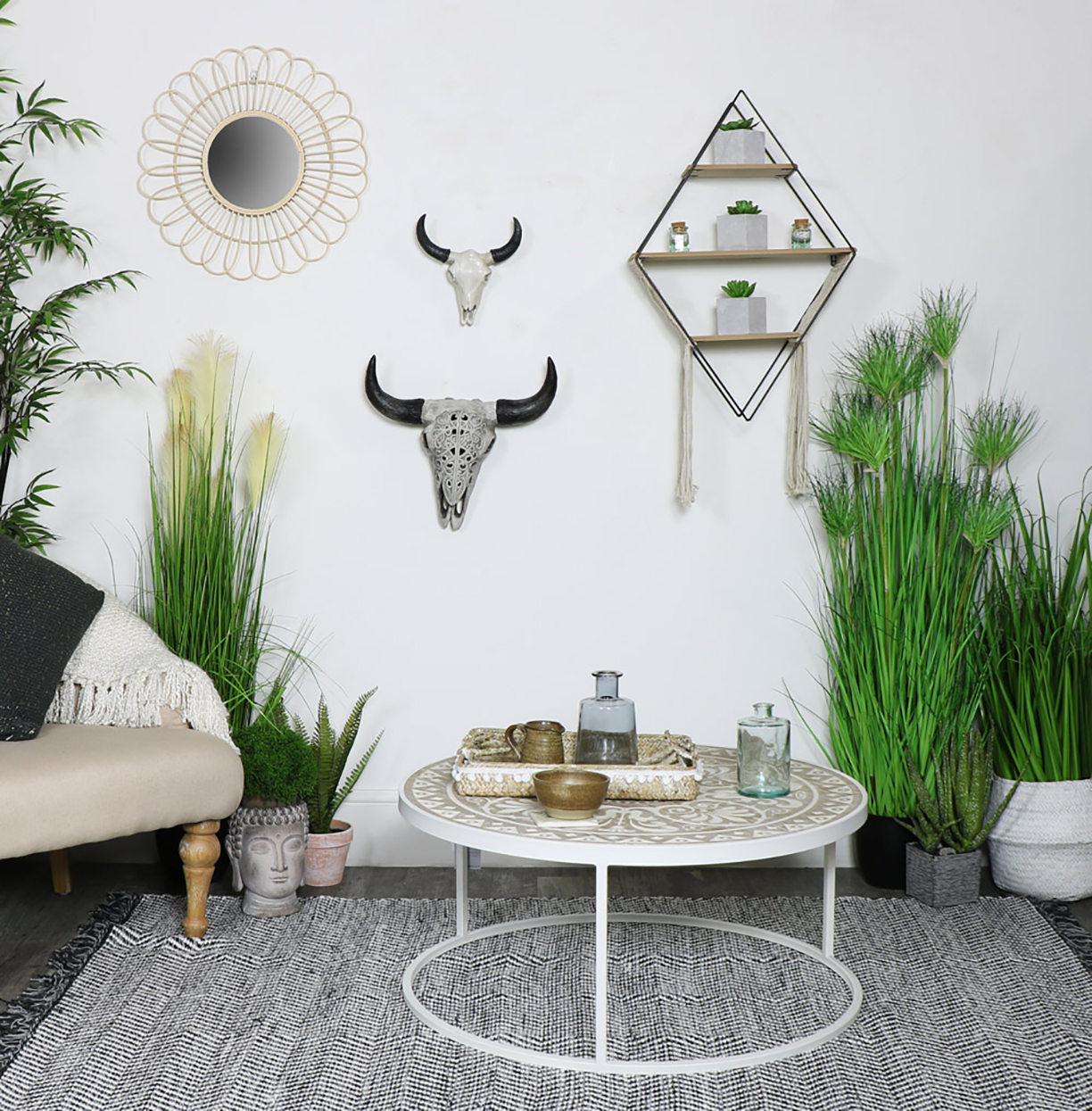
Photo courtesy of Melody Maison
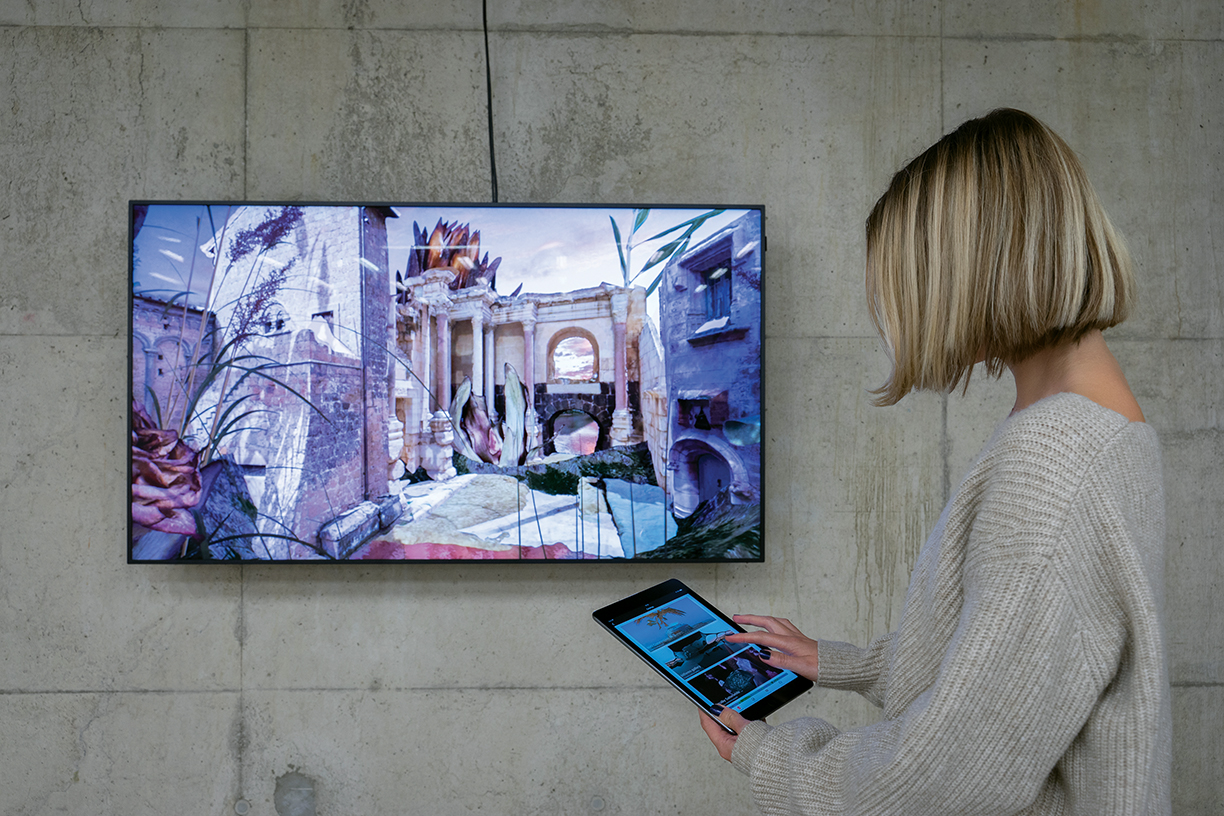
Photo courtesy Niio.
Smart technologies and artificial intelligence are changing the way we consume art.
While many treasured works of art are safely contained in notable museums or in the homes of experienced collectors, a new tide is cresting along the shores of the art curation field with the influx of digital art.
Digital art, more widely known as new media art, is an interesting sector of the art industry to define, even for Beryl Graham, who is a professor in New Media Art at the University of Sunderland. She notes that the roots of this art form have drawn inspiration from a range of movements, from conceptual artwork to video art, which also began in the 1960s.
“It’s broadly digital but [it’s also] the kind of art that works in different ways in different kinds of behaviors,” Graham notes. One fascinating example would be an exhibition of software art in which the software, sometimes even artificial intelligence-based artwork, can learn and grow on its own. Graham explains that an artist might start a piece of software and watch it evolve, perhaps give it a virus and watch, showing to the audience that the “end point isn’t quite under the control of the artist.”
Magdalena “Magda” Sawon, owner of the contemporary art gallery Postmasters Gallery in New York, says that the digital age has only heightened the senses of curators and artists, who are traditionally at the forefront of new developments in culture and technology.
“Technology is a tool,” she notes, “it is also a moving target and changing constantly. The question is to be aware of new developments and adapt it intelligently to one’s needs and benefit.” Fittingly, as artists have been harnessing the power of technology within the art industry, curators and galleries have had to “keep up with the times,” and embrace digital forms of artwork and the systems and methods in which they are displayed.
Donna Holford-Lovell, director of The North East of North festival (NEoN), notes how the incorporation of interaction and participation into art displays appeals to today’s technology-savvy audiences that have been gradually reinvigorating focus on the digital art world.
“The idea of ‘curation’ has become ubiquitous and our audience is seen to be curating many aspects of their own lives,” Holford-Lovell says. NEoN is an organized event that aims to advance the understanding and accessibility of digital and technology-driven art forms by having the artist and curator work together to translate “the spectacle of experience,” via digital platforms within physical spaces, like virtual reality, artificial intelligence, and even social media.
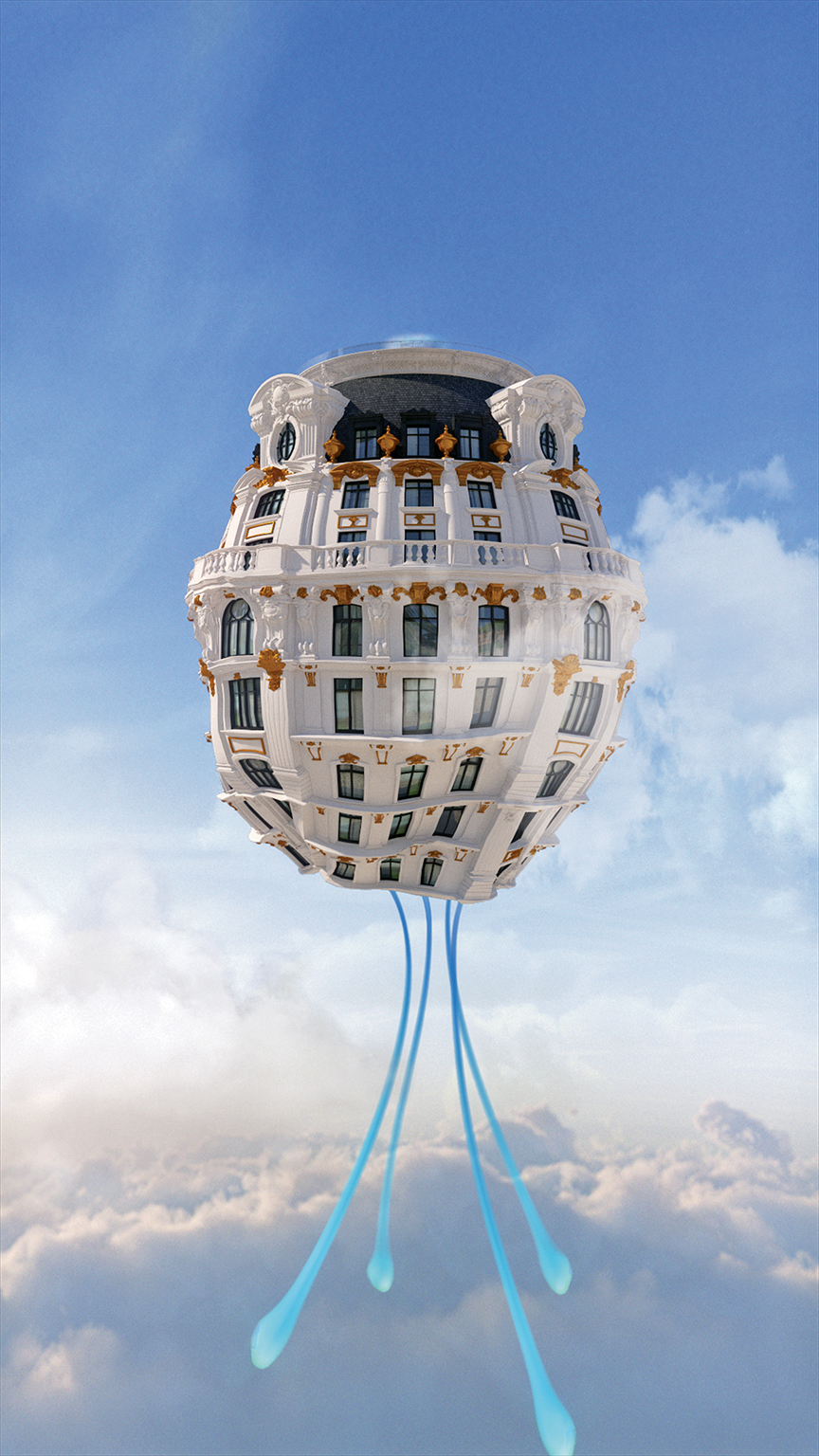
JONATHAN MONAGHAN (US)
The Phoenix and the Medusa (2018), Video, 7 min 69 sec, Edition of 30, Niio Commission Series.
With systems and platforms, from artificial intelligence to online-based forums, both artists and curators now are developing larger platforms and databases to contribute toward. As well as an educator, Graham is co-founder and editor of the Curatorial Resource for Upstart Media Bliss, or CRUMB, a resource for curators of new media art that aims to help overcome any challenges presented from this rise in digital art, from installations to networks of artists and individuals versed in these practices.
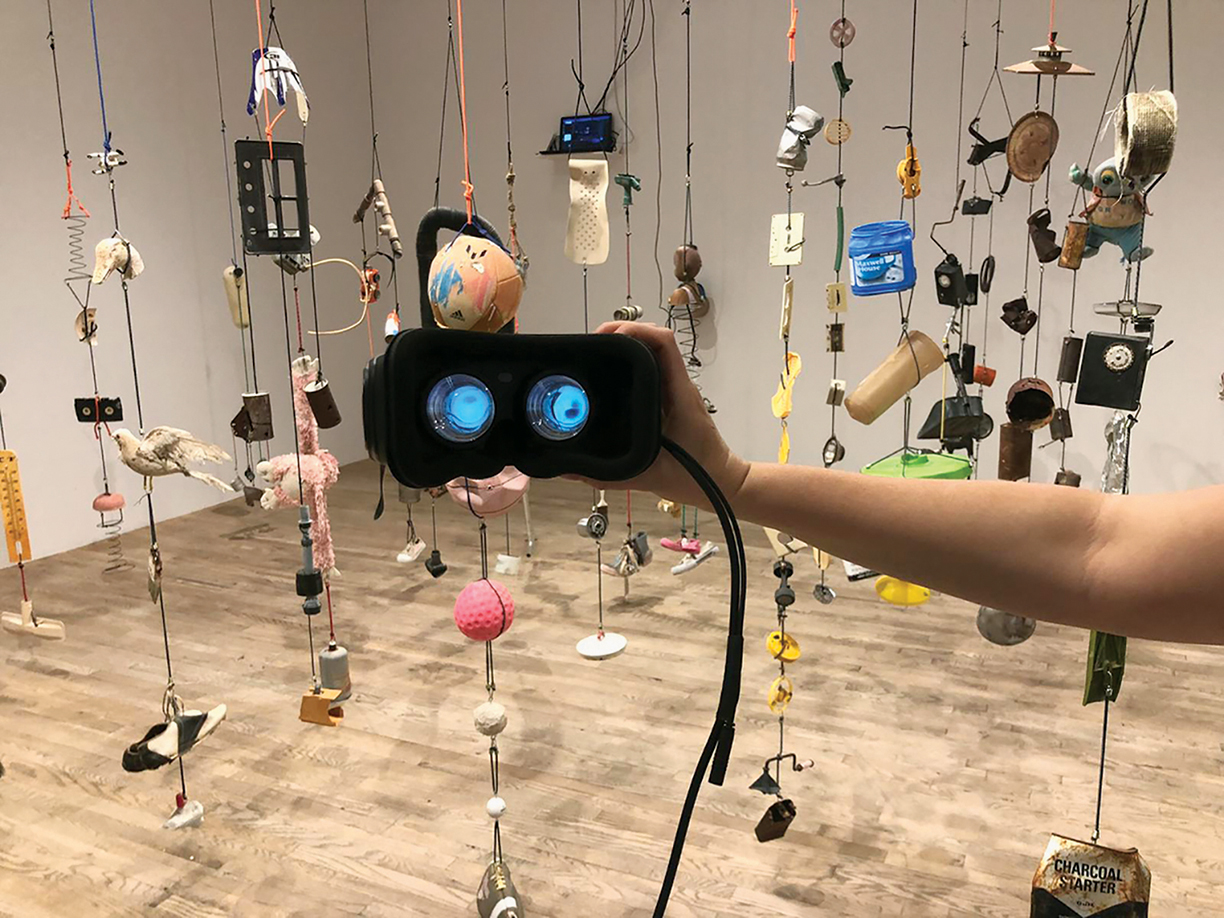
PERRY HOBERMAN
Suspensions (2018), VR and mixed reality installation, Postmasters April 2018.
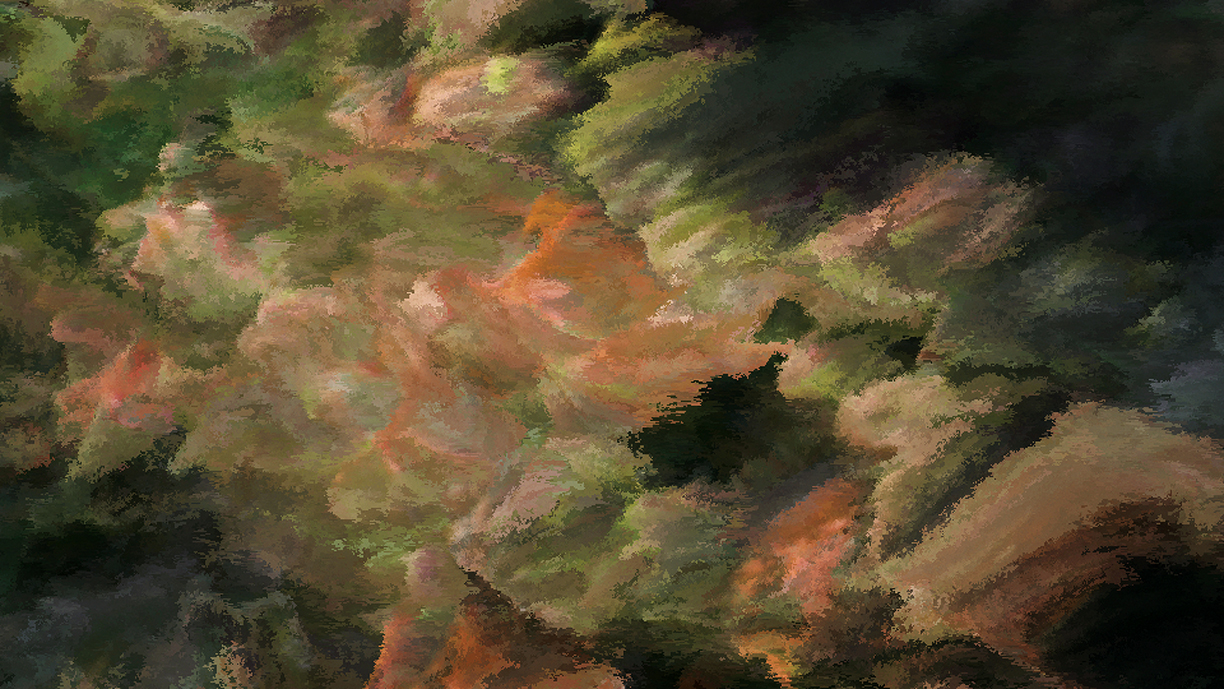
QUAYOLA (UK)
Camouflage (2018), Moving Image, 6 min 4 sec, Edition of 30, Niio Commission Series
On the luxury spectrum of art curation, Niio is a brand integrating digital art and technology-driven forms of collection and distribution that surges past the limitations of traditional artwork. Niio is an art and tech company aimed to enable the exposure of digital artwork in a time that to the company feels like a fourth industrial revolution.
“Art has always reflected the world we live in,” says Rob Anders, CEO and co-founder of Niio, “and artists will create their art with any tool they can access.” In today’s world, that tool has come to be technology. Anders, who understands the eclectic background of digital art from conceptual and video art, wanted to help designers and architects best fit homes with the art of today, and after speaking with top galleries he found that what’s really needed are new models of both the business and technological side that reach a broader audience — even better: one with a subscription.
“We envision a world where in homes people will have more digital canvases with interactive or immersive works, all on a centralized connected system that can very easily change,” Anders says, with access to top artists in the world in this ecosystem of artists, galleries and collections all on the Niio platform. Luckily, the CEO notes, the technology is “already there,” from artificial intelligence in devices like Amazon’s Alexa devices to smart televisions, all devices that can easily work with the Niio platform to display digital artwork.
To those interested in having access to the “world’s finest art accessible on-demand,” Niio is open as a limited edition membership at about $5,000 a month, with access to curated exhibitions and collections, or art “playlists” of over 7,500 art pieces on the platform that can be easily changed and displayed on devices like smart TVs, projectors, screens, et cetera, which can be installed by Niio technicians as well.
“Art curation is telling a particular story,” he says. “In order to give people these digital works, it’s not about just finding the individual works, it’s about giving people the ability to learn about the works they are looking at,” he says.
New York designer Aimée Wilder explores Eudaimonia, a Greek word commonly translated as happiness or “human flourishing,” in her collection of wallpapers, fabrics, rug and accessories. From the effects of the moon on the evolution of the natural world to the impact of astrological phenomenon, Wilder captures the many ways surroundings can influence our psychological state, and contribute to overall wellness.
“This collection was born through finding balance and stability in my own life,” says Wilder. “Once I learned that living to work instead of working to live, along with incorporating methods like Vedic meditation and natural healing into my daily routine, was able to create a peaceful environment around me, I hoped to thoughtfully reflect that feeling in each design.”
Eudaimonia consists of two wallpaper and fabric patterns, Pyramide du Soleil and Earthlight, with an additional rug pattern, Eclipse. All three patterns reflect the natural balance between the Earth, the Sun, and the Moon, evoking the beauty of cosmic balance. With this collection, Wilder introduces a new construction for commercial fabrics, tested for 50,000 double rubs and available with a range of protective coatings including anti-microbial and stain coating. In addition, for the first time, Wilder will offer wallpaper printed in Brooklyn, New York, where she resides and operates her design studio.
Pyramide du Soleil is a subtly optical pattern manifesting the ancient Sun’s shadow and its balance with the earth, Pyramide du Soleil features pyramid and Sun as they represent the illusive quality of time. It integrates pyramids and circles with sophisticated diagonals and horizontal stripes, inspired by the continuous synchronicity that exists between the earth and the Moon.
Earthlight focuses on the waxing and waning cycles of the Moon’s phases in an eye-catching, geometric pattern across wallpaper and fabric design. Named for the scientific phenomenon in which sunlight reflected from Earth’s surface indirectly illuminates the otherwise dark side of the Moon, Earthlight is sure to brighten any space.
Eclipse showcases the inversion of colors in this rug design suggests the effects of an Eclipse, a harbinger of change in the daily life that acts as a guiding hand when questioning one’s path. With a boldness that invokes a new take on a vintage aesthetic, the Eclipse rug comes in a range of warm tones that will add a welcoming touch to a room.
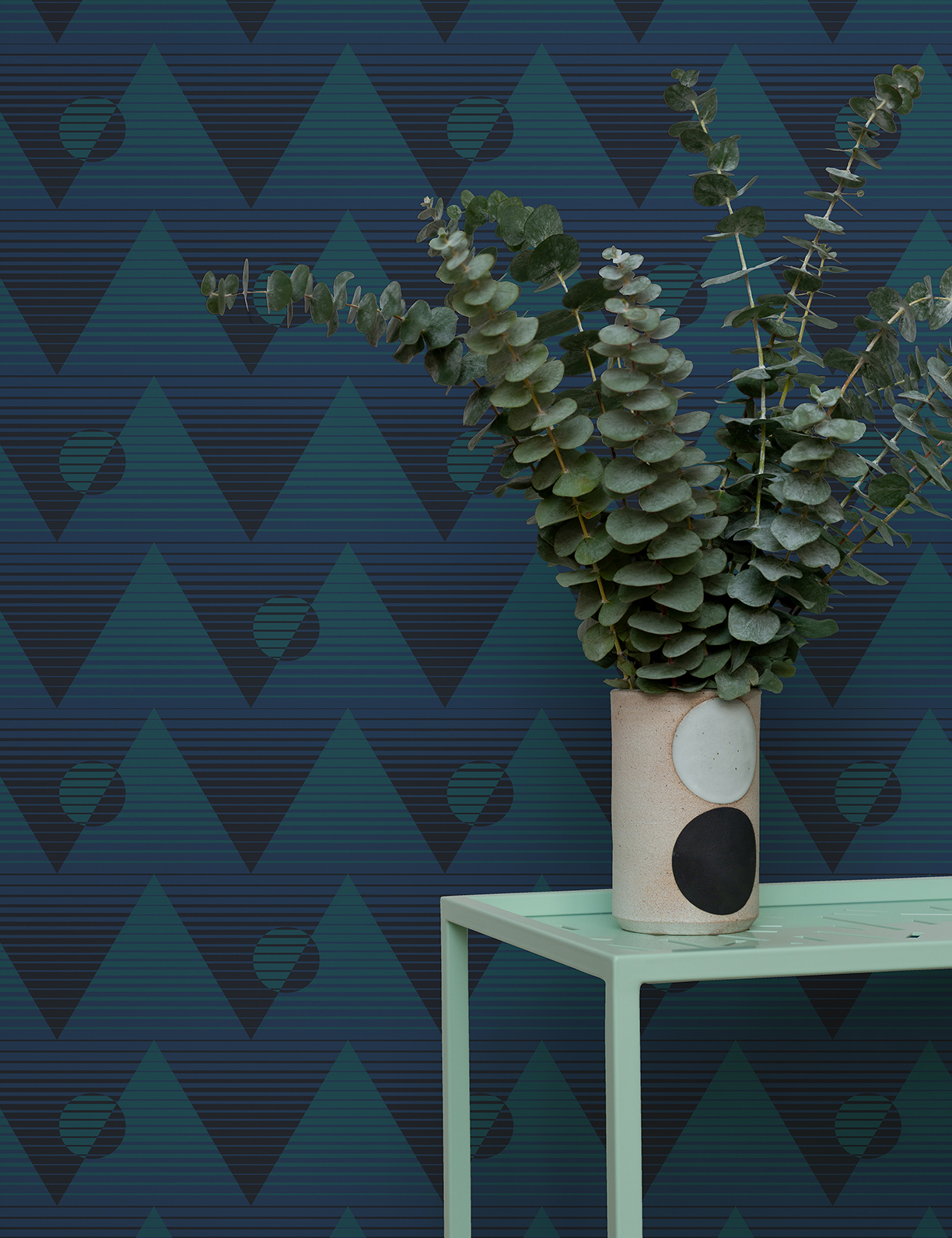
Pyramide du Soleil
Photos courtesy Aimee Wilder.

Eclipse
Photo by ©Dylan Chandler 2018.
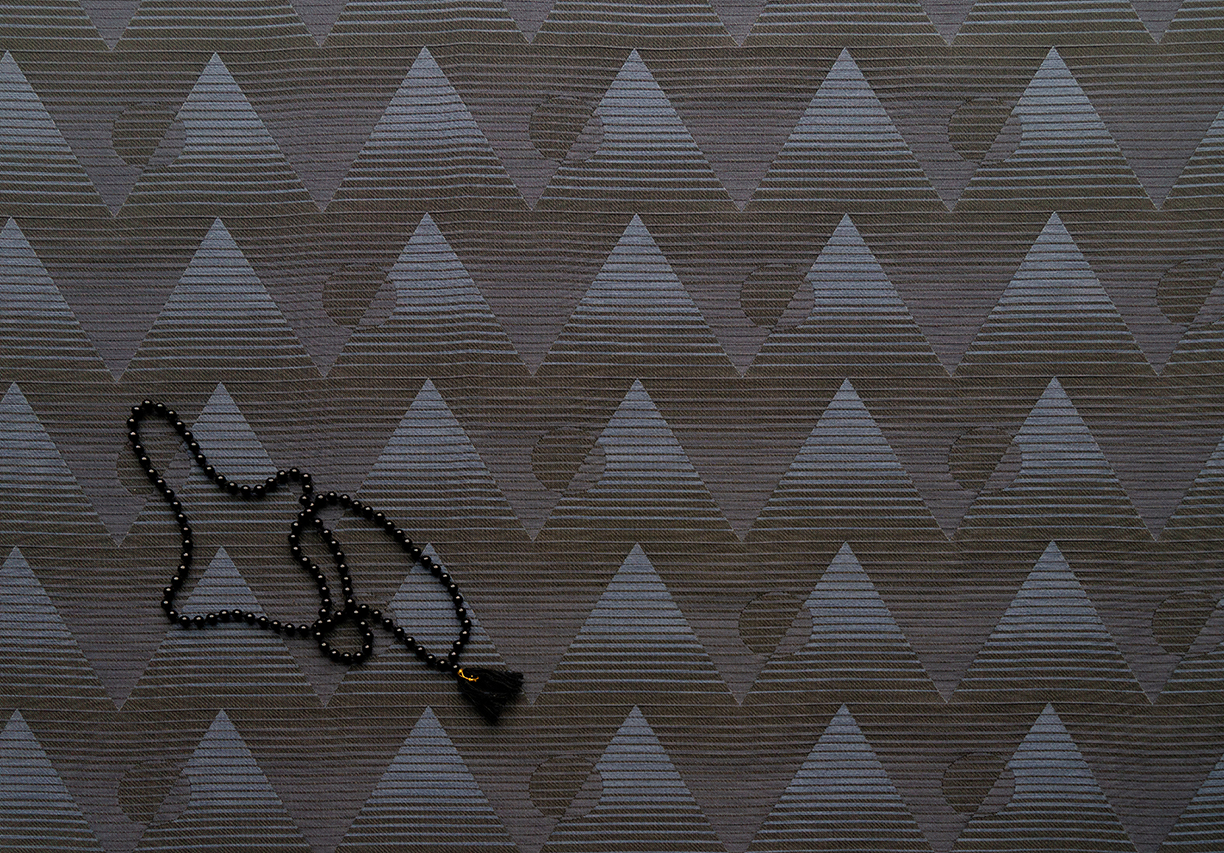
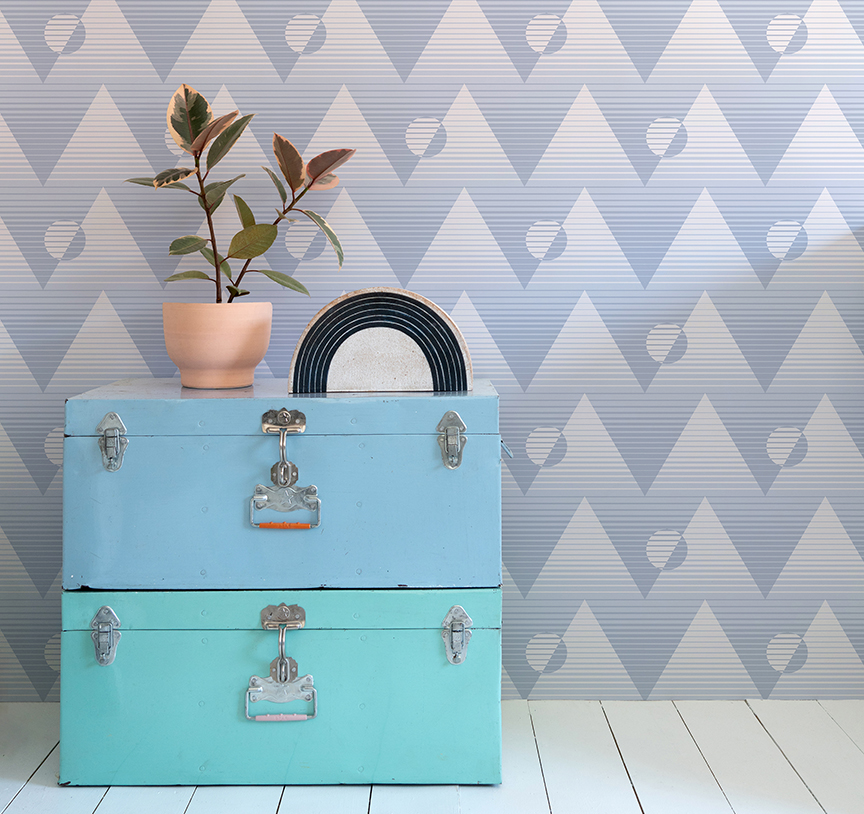
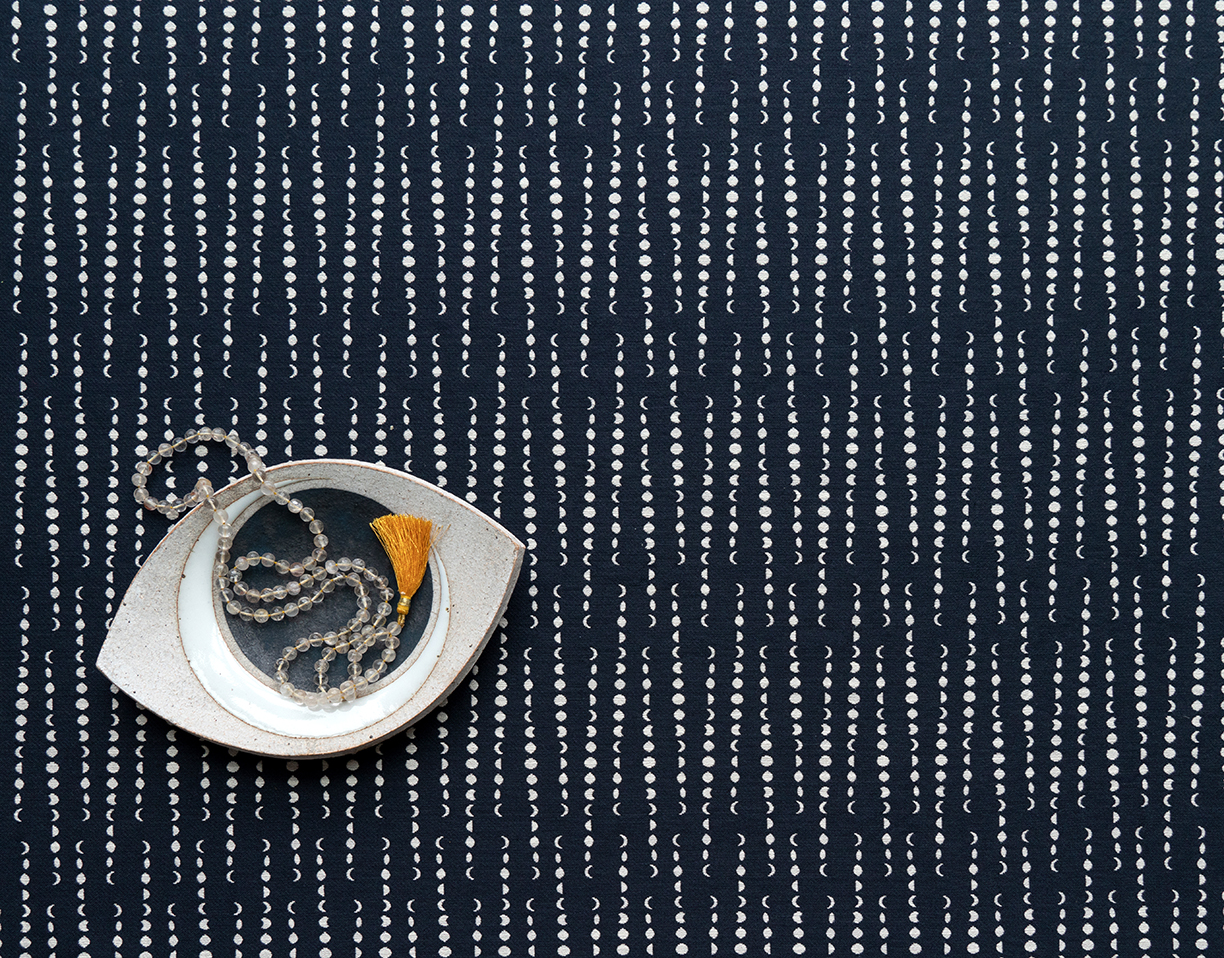
Earthlight
Photos courtesy Aimee Wilder.
